
The Melbourne Free Hospital for Sick Children Established
September 9th, 1870
Dr William John Smith and Dr John Singleton opened the hospital in a six-bedroom house located at 39 Stephen Street.
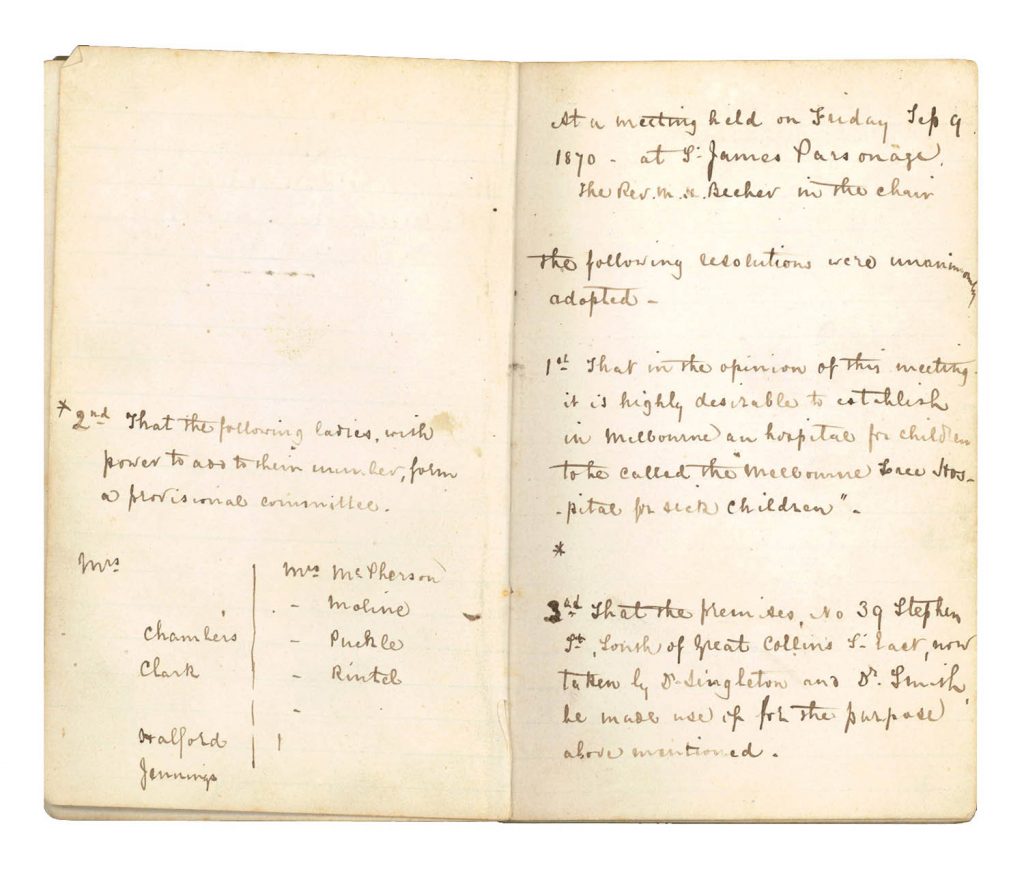
Committee of Management Established
September 9th, 1870
The committee was run and populated predominantly by women until 1940.
Image credit: PROV, VA 1239 The Royal Children’s Hospital, VPRS 16796/P1 Minutes of the Committee of Management (1870-1992), Unit 1 (Minutes 1870 -1872). Digitised copy.
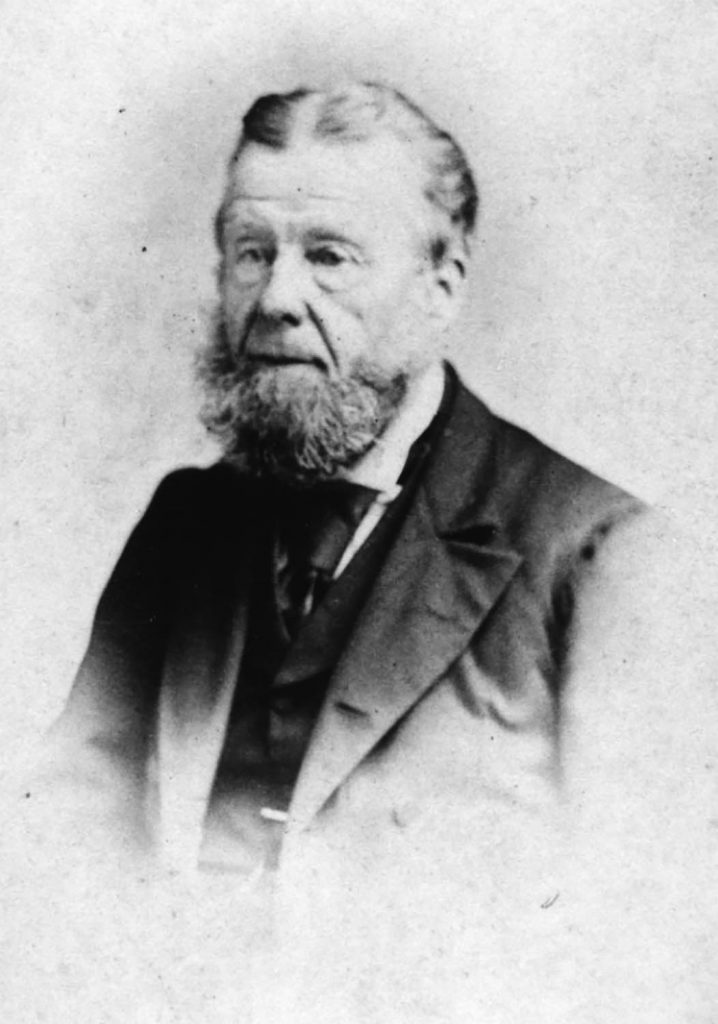
First Attending Surgeon
September 9th, 1870
Hospital founder Dr Smith took on the role of attending surgeon.
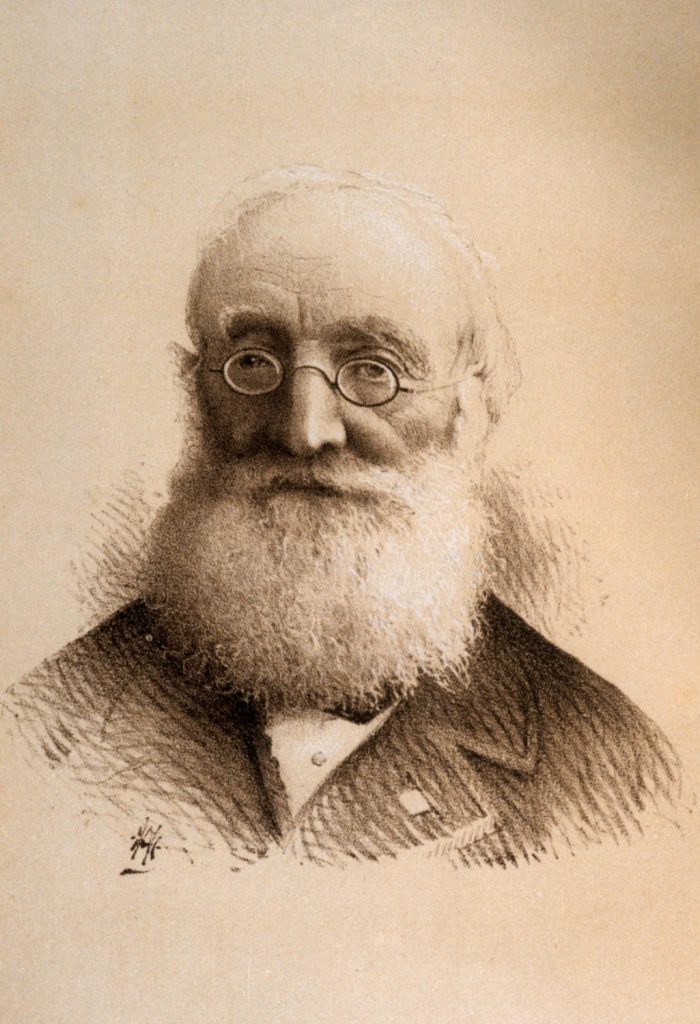
First Attending Physician
September 9th, 1870
Hospital founder Dr Singleton took on the role of attending physician.
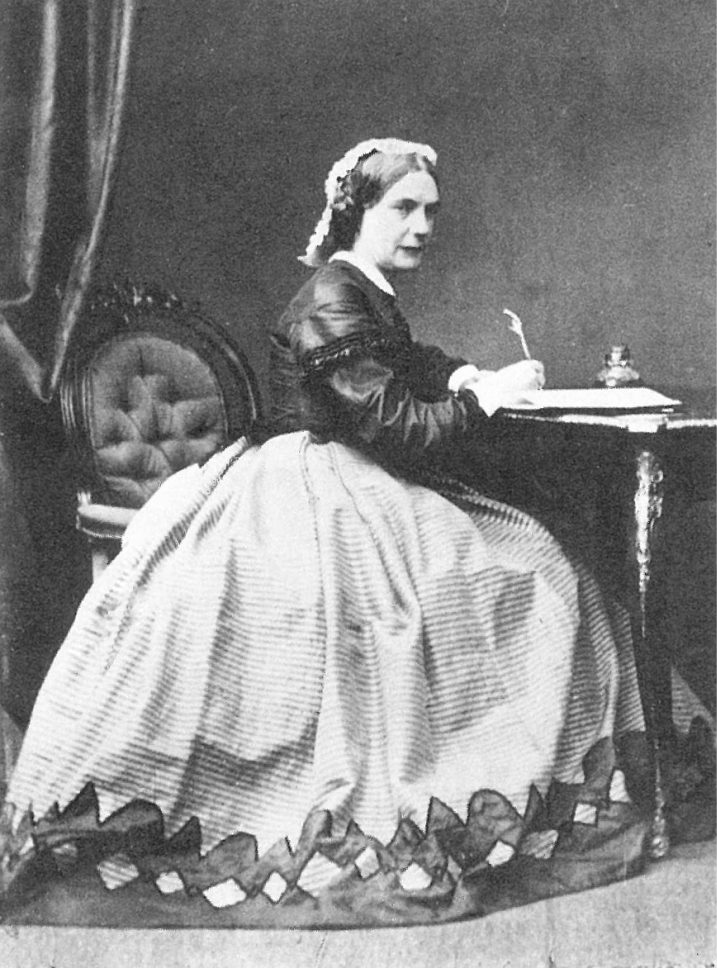
Frances Perry
Perry, wife of the Anglican Bishop of Melbourne, was elected as the first president of the Committee of Management.
First Honorary Physicians and Surgeons
September 9th, 1870
In addition to Dr William John Smith and Dr John Singleton, Dr Motherwell was named honorary consulting physician and Professor Halford, honorary consulting surgeon.
First Nurse for Inpatients
Mrs Bail was the first nurse employed by the hospital. She remained on staff at the hospital until 1878.
First Inpatients
December 1870
Six cots were established for the initial intake of inpatients.
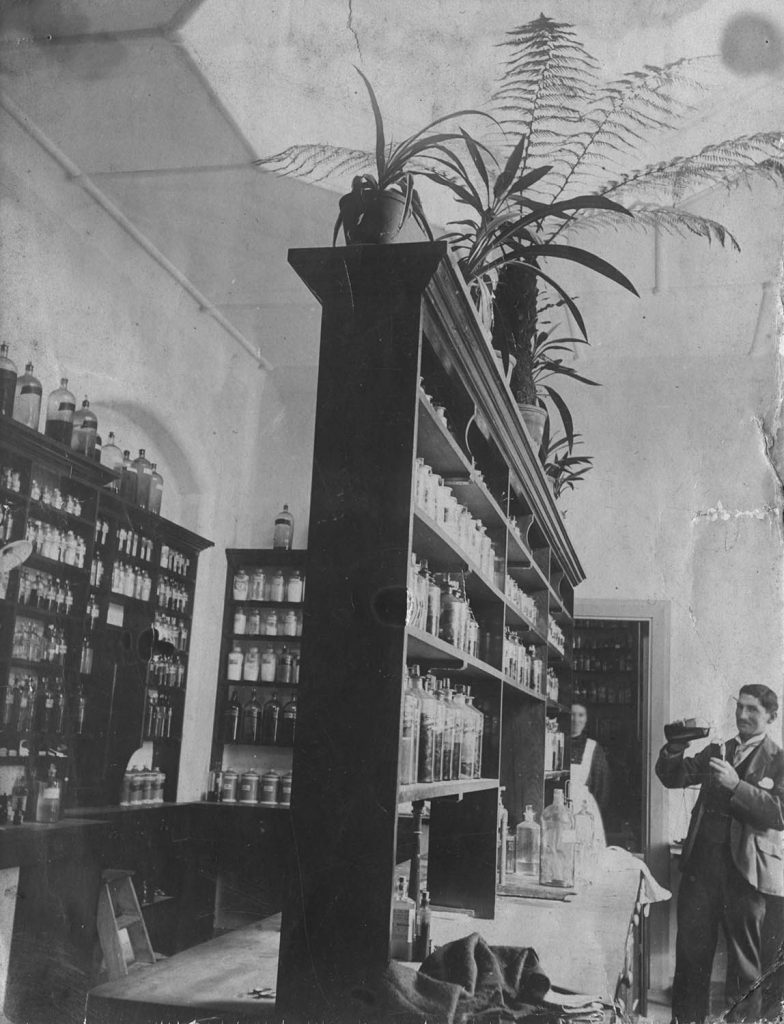
First Pharmacist
Robert Singleton, son of Dr John Singleton, ran the medicine dispensary.
Image details: First known photo of the hospital's pharmacy, circa 1917.
Dr John Singleton Resigns
Due to ideological differences, Dr John Singleton withdrew from his hospital commitments.
Dr William John Smith Resigns
Dr Smith was awarded life governorship of the hospital when he resigned in order to establish his own general practice in Casterton.
Doctors William a’Beckett, Joseph Black and Henry Wigg
After the departure of Smith and Singleton, three new doctors were appointed to the position of honorary attending medical officer.
Doctors Edwin James and James Nield
As a result of growth in demand, two more doctors were appointed to the position of honorary medical staff.
First Children’s Hospital Bazaar
The first of many community fundraising events, the bazaar raised over £2000.
Matron Marion Harvey
Harvey was appointed the new role of matron. She had a staff of two nurses; Head Nurse Mrs Bail and Assistant Nurse Anna Ford.

Relocation to 13 Spring Street
October 1873
The hospital moved to a larger premises with space for 15 beds. The name was changed to Melbourne Hospital for Sick Children.
Scarlet Fever Epidemic
1875 - 1876
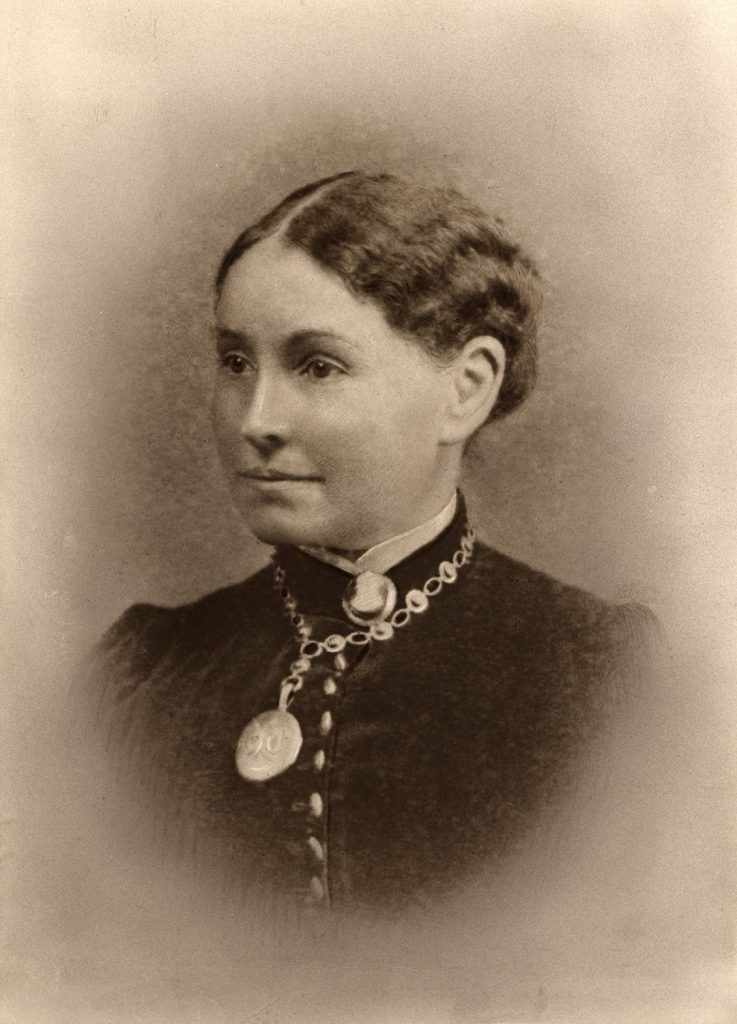
Matron Sarah Anne Bishop
Appointed as matron, Bishop worked in the role until 1899. She had a significant influence on the hospital in its formative years.
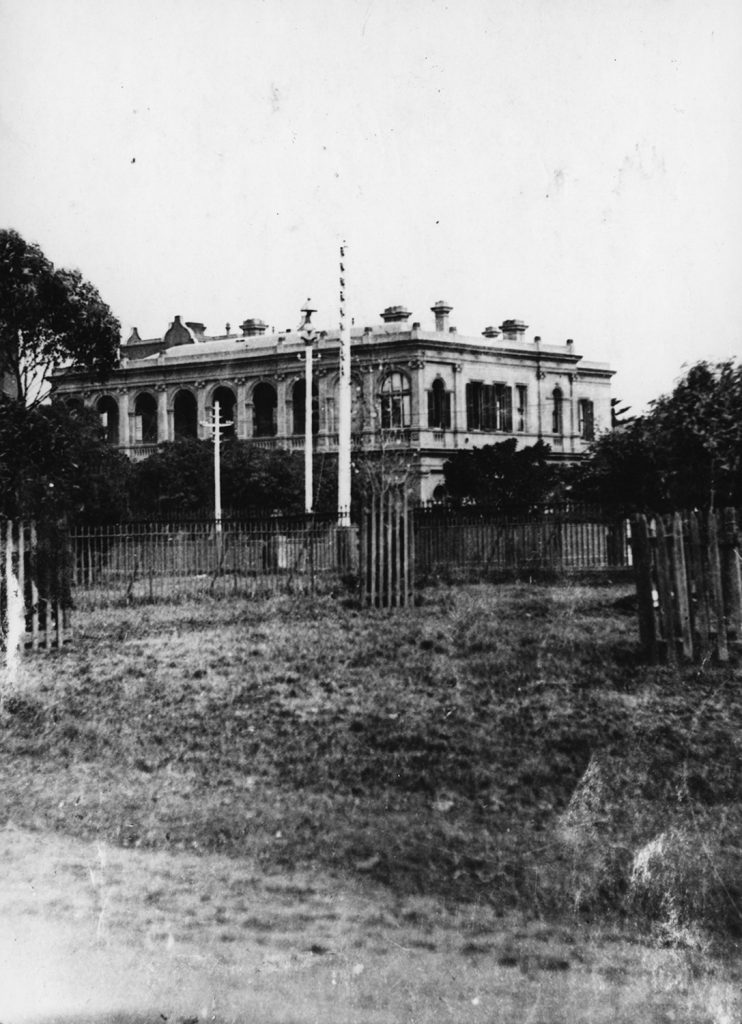
Purchase of Sir Redmond Barry’s House
In response to the increased need for larger premises, the Committee of Management purchased Barry’s house in Carlton for £10,000.

Move to Carlton Premises
The new hospital, with space for 24 beds, was opened by Sir George and Lady Bowen.
First Resident Doctor
The committee decided to create a paid position for a resident doctor. The honorary doctor positions were unpaid, usually held by doctors with their own private practice. The first resident doctor was Dr W.E. Stewart, soon replaced by Dr Charles Hunter.

Nursing Reform
Organised training of nurses and formal nurse uniforms were introduced.
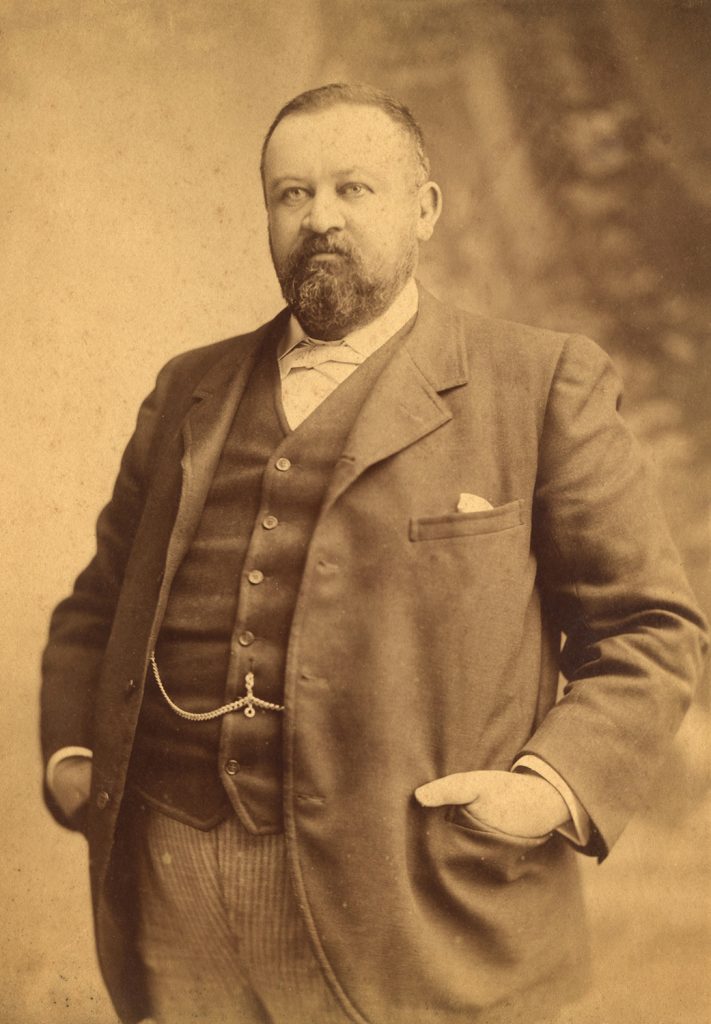
Dr William Snowball
Dr Snowball was appointed resident doctor in 1878 and stayed in the role until 1882. Snowball came to be regarded as the father of Australian paediatrics. He retained an honorary position until his death in 1902.
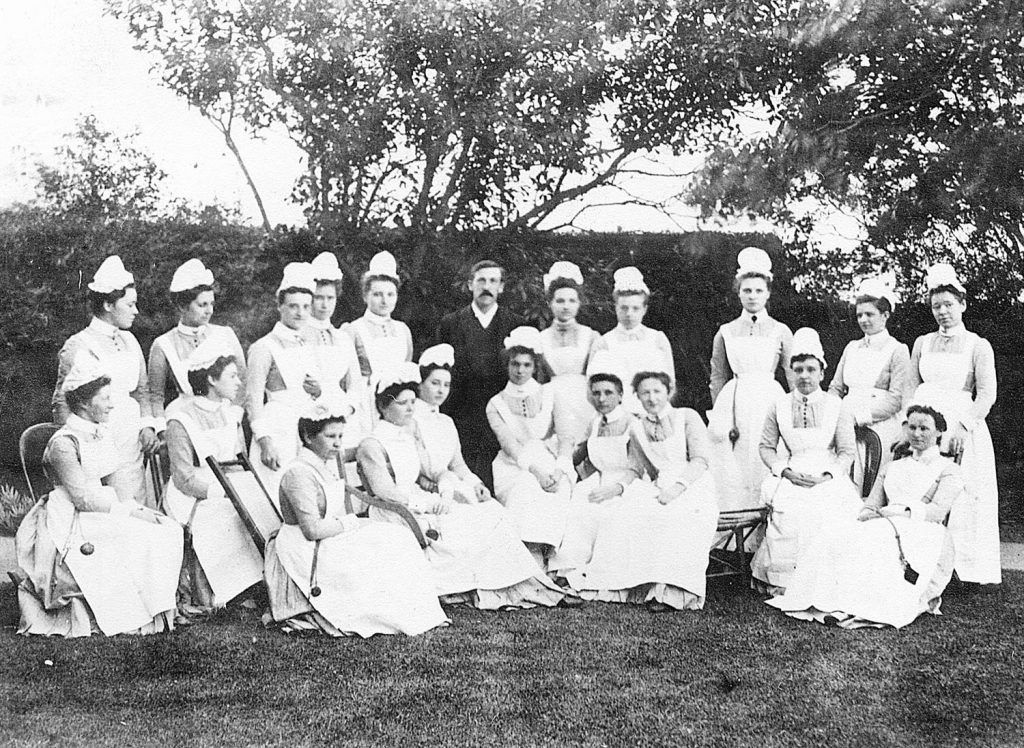
John Jackson Appointed to the Role of Collector
The collector role was somewhat closer to hospital manager. Jackson proved an effective fundraiser and greatly expanded the hospital’s avenues for funding and subscriptions.
Hospital Bazaar
£4000 were raised to pay off remaining debt from the purchase of the Redmond Barry property.
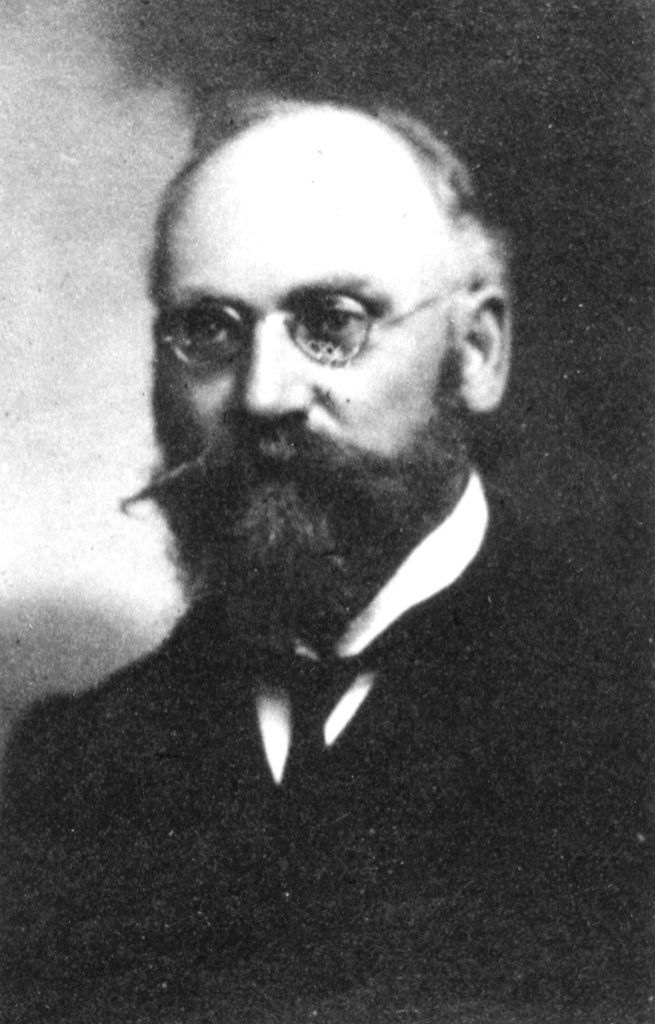
Dr Peter Bennie
Dr Bennie was appointed an honorary position and remained an active member of hospital staff for 36 years. He also lectured in medicine at the University of Melbourne.
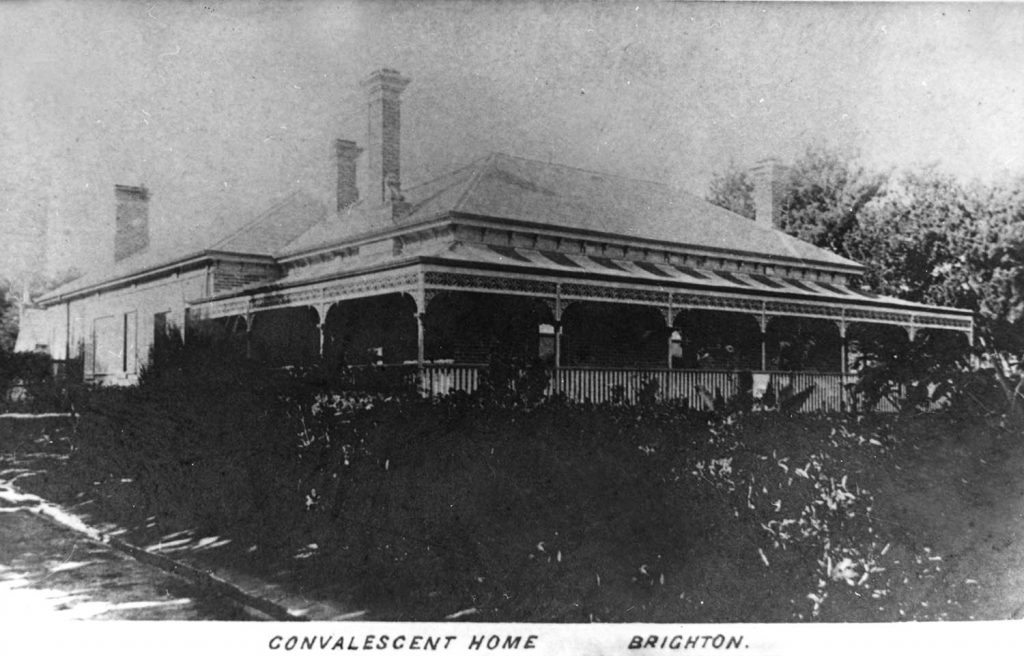
Brighton Convalescent Cottage
Opened in Holyrood Street, a short walk from Brighton Beach, the seaside location was intended to provide fresh air and sunshine to patients who were usually accustomed to life in inner-Melbourne slums.
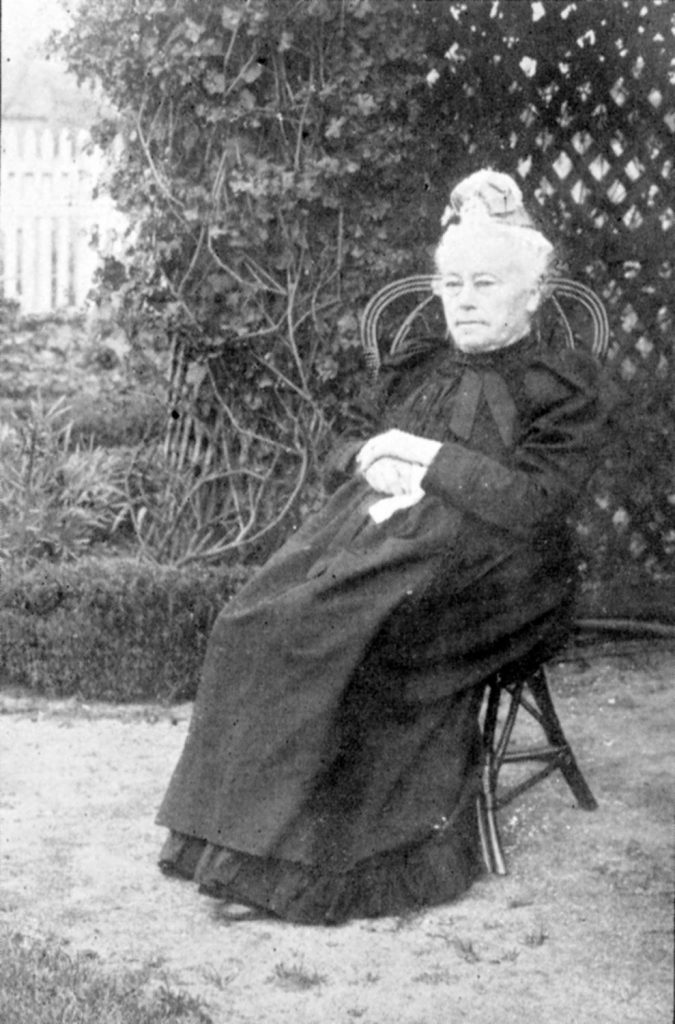
Elizabeth Testar
Elected as President of the Committee, Testar took a leading role in building, planning and expansion of the hospital.
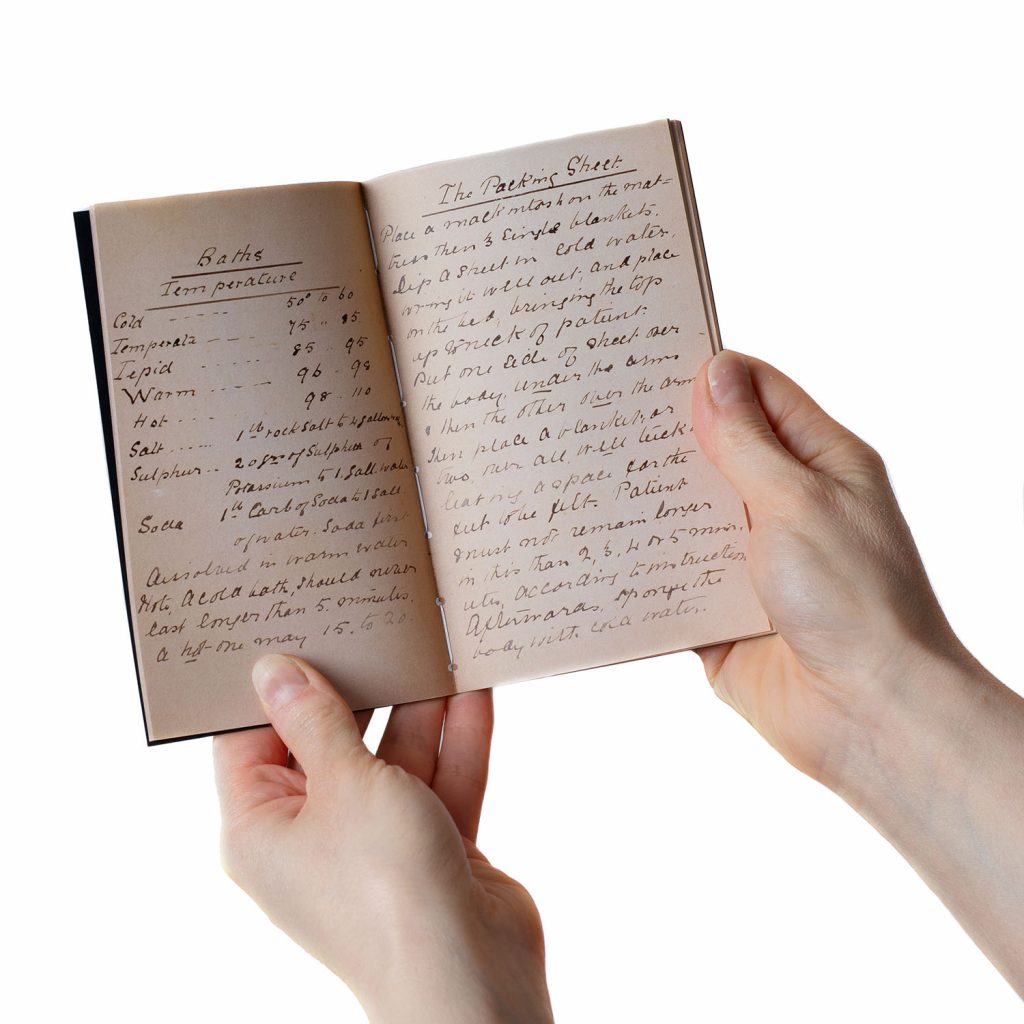
Nurse Rose Vaughan
Vaughan trained at the Children’s and her training notes still exist today.
Image credit: Alvin Aquino
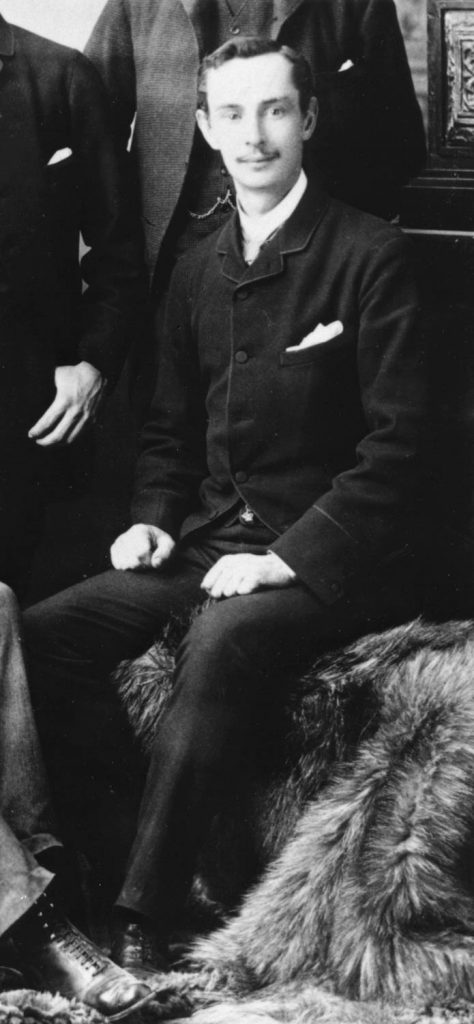
Dr Arthur Jeffreys Wood
Appointed as resident doctor, then made an honorary staff member in 1893, Wood stayed in the role until 1921. He maintained a consultancy position at the hospital until his death in 1937. His research on the ill-effect of bad milk resulted in the prevention of many infant deaths.
Nurse Training School Officially Recognised
Training has long been an important facet of the hospital’s operations, especially in the early years when paediatric care was still developing as a specialty discipline.
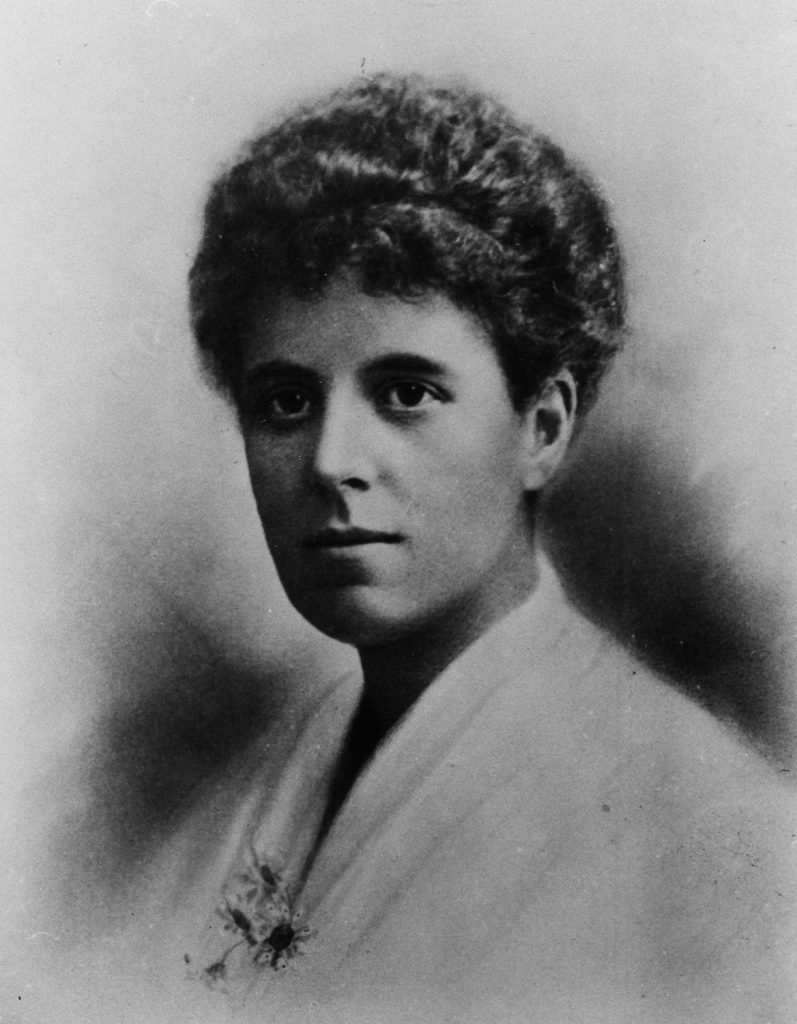
Nurse Grace Jennings Carmichael
Carmichael began nurse training at the Children’s. She was a published poet and her time at the hospital inspired many writings.
Image courtesy State Library of Victoria.
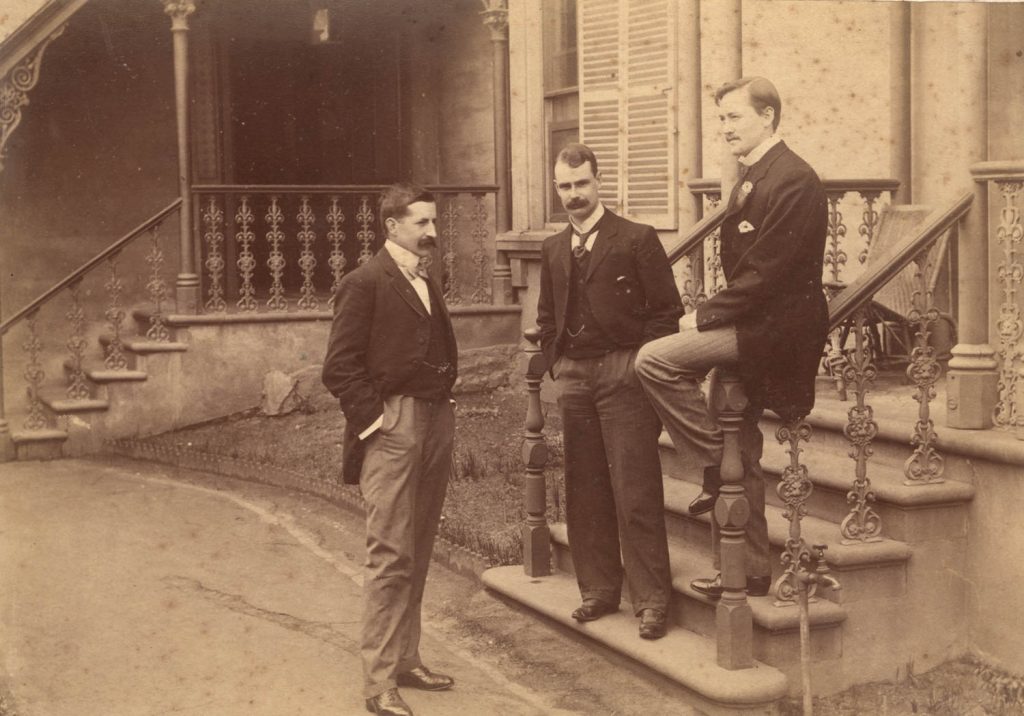
Dr Richard Stawell
Appointed as resident, then honorary staff member from 1893, Stawell retained a position at the hospital until 1914. He was a highly regarded teacher who attracted many medical students to the hospital.
Nurse Training Given an Overhaul
Formal lectures and examinations were introduced, with badges and certificates awarded to successful trainees.
Dr Hamilton Russell
New appointee as honorary staff member, Russell was active at the hospital on-and-off until 1925.
Dr Alan Mackay
New appointee as honorary medical officer, active at the hospital until 1920.
Australian Financial Crisis
Steep pay cuts for hospital staff.

Change to the Infectious Diseases Policy
Diphtheria and scarlet fever patients were treated as outpatients - they had previously been refused care due to risk of contagion.
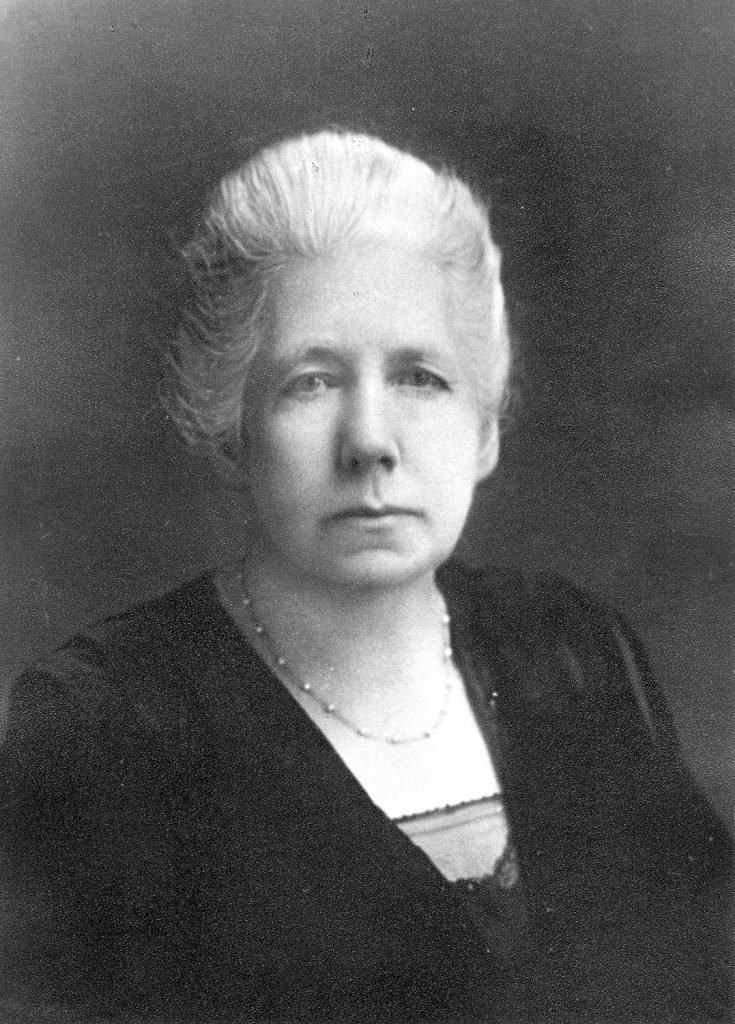
Mary Guthrie
Guthrie became a member of the Committee of Management and played an active role at the hospital until 1931. During the early 1920s Guthrie was instrumental in establishing the Auxiliary service at the Children’s Hospital.
Behring’s Diphtheria Antitoxin Successfully Used
Diphtheria is an infectious disease that is now largely prevented by immunisation.

Competition for a New Building Design
May 1896
The winning entry was not implemented, the committee inexplicably actioned a different design to replace Redmond Barry’s house.

The Hospital’s First X-ray Apparatus
Eager to stay up-to-date with new technology, the hospital committee purchased x-ray equipment for £25.
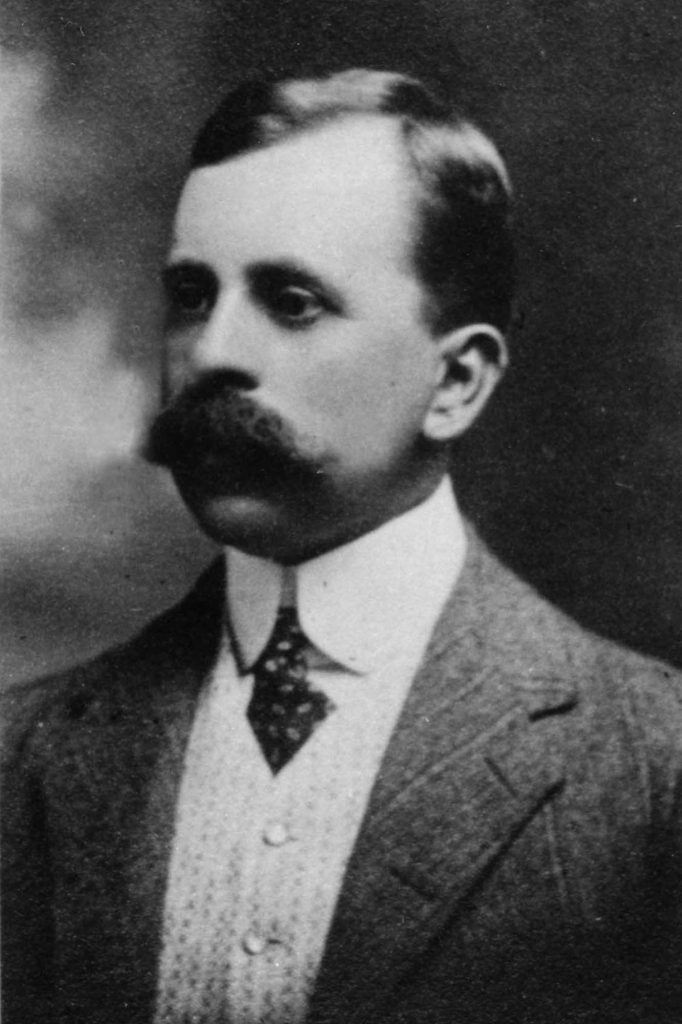
Radiology Department Established
Led by Dr Herbert Hewlett, the hospital kept abreast of diagnostic developments available with this new discipline and was the first Melbourne public hospital with a radiology department.
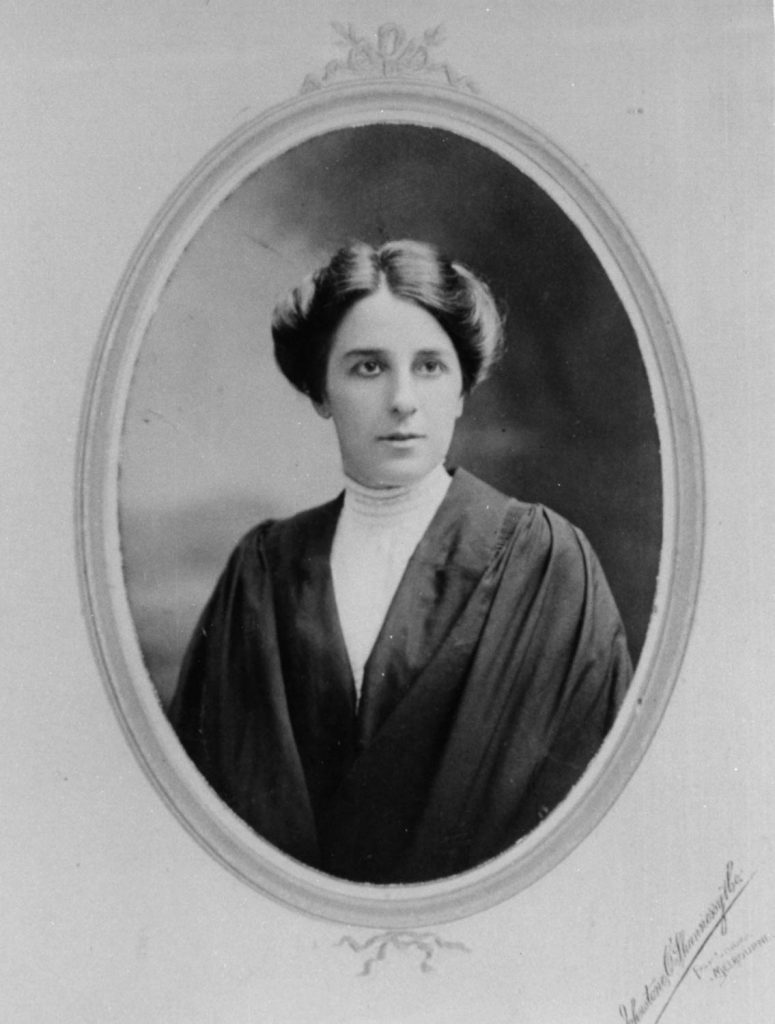
Dr Ethel Mary Vaughan Cowan
After a one-month trial – without pay – Cowan became the first woman to be made resident doctor.
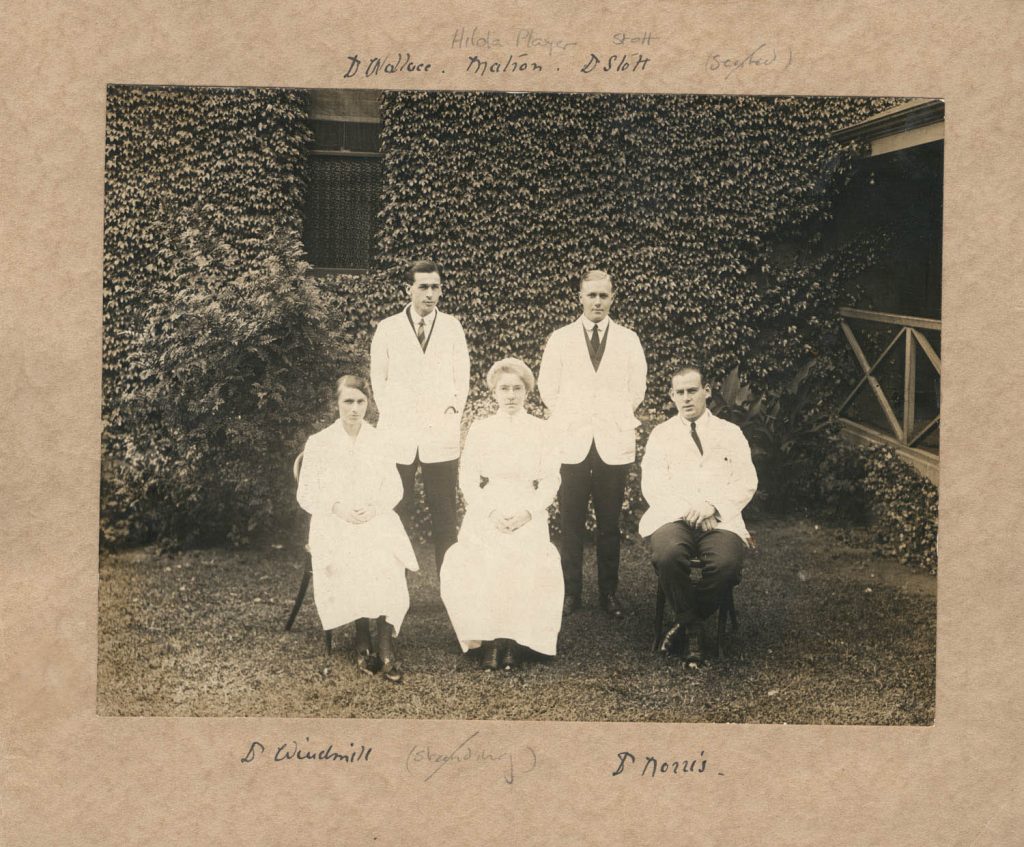
Matron Hilda Player
Appointed matron, she stayed in the role until 1920.

New Outpatients Building Opened on Drummond Street, Carlton
Development of the hospital responded to growth in the local population and an increase in patient demand.
Re-structure of the Hospital Committee
For the first time, a representative from the honorary medical staff joined the management committee.

Formal Ties Created With the University of Melbourne
Dr William Snowball joined the faculty of medicine. It soon became compulsory for medical students to complete some paediatric training at the hospital.
Image courtesy of the Medical History Museum, University of Melbourne.
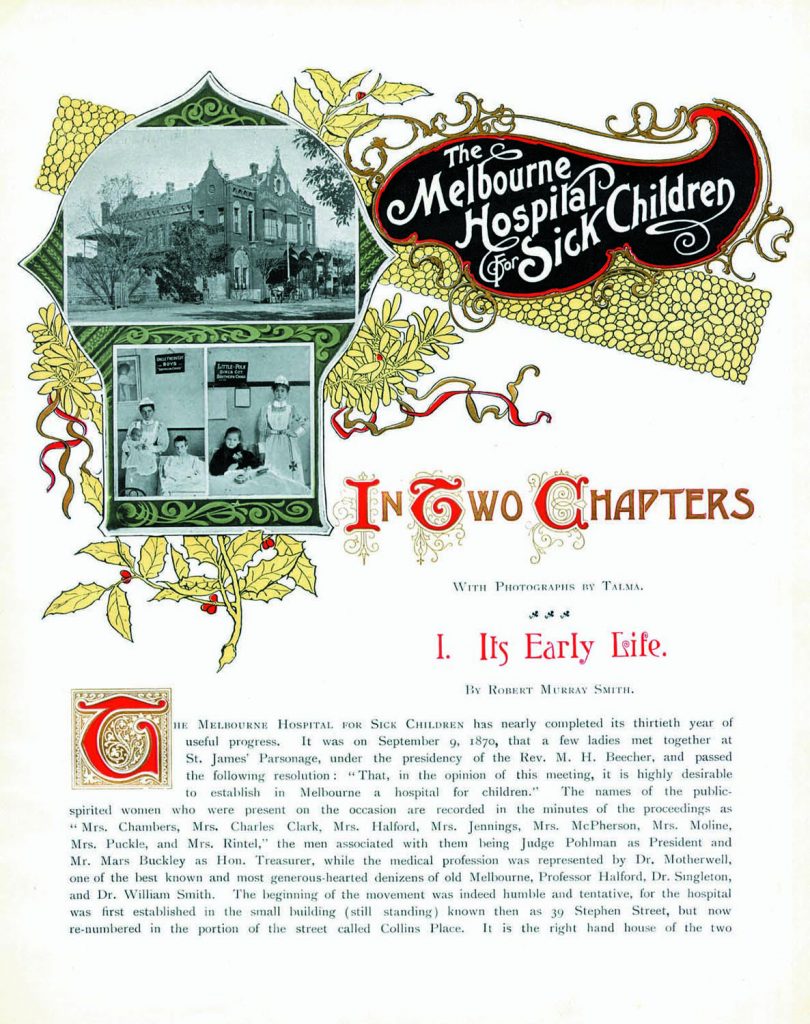
Hospital Bazaar Raised Over £17,000
September 1st, 1900
The bazaar ran for three weeks and a souvenir book ‘Childhood in Bud and Blossom’ continued to generate income from sales long afterwards.
Cerebro-spinal Meningitis Epidemic
Dr Harry Douglas Stephens
First employed by the hospital in 1901, Dr Stephens progressed through the ranks and departments, maintaining a connection with the hospital until his death in 1952.
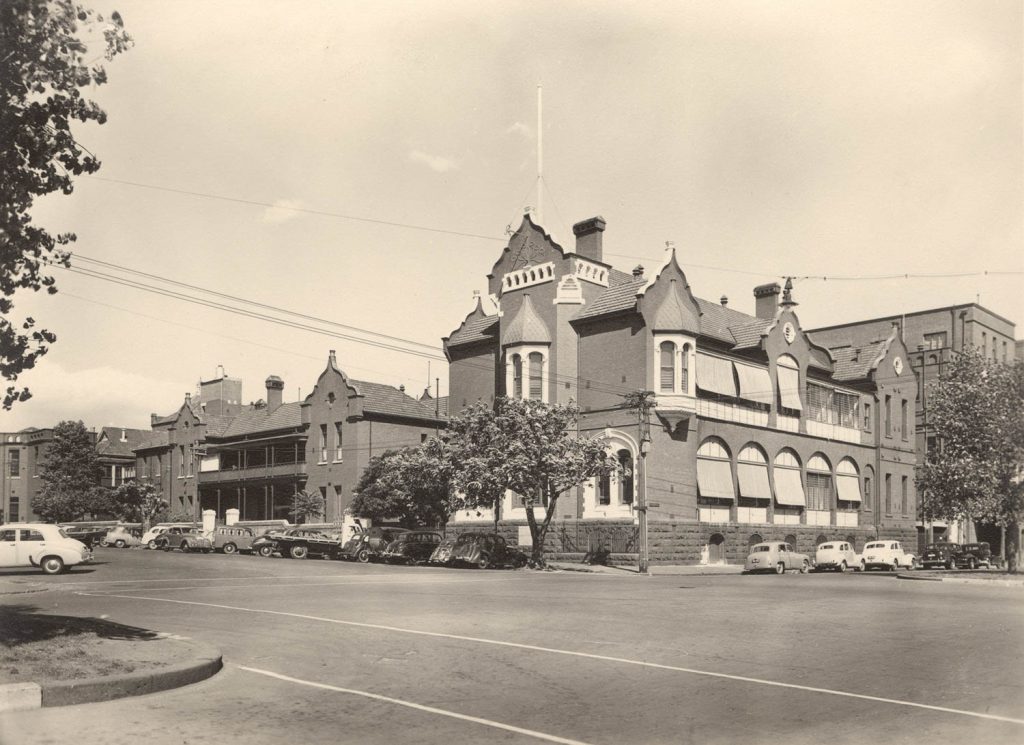
The Princess May Pavilion
Built on the corner of Pelham and Drummond Street in Carlton, the new building provided much-needed wards for inpatients.
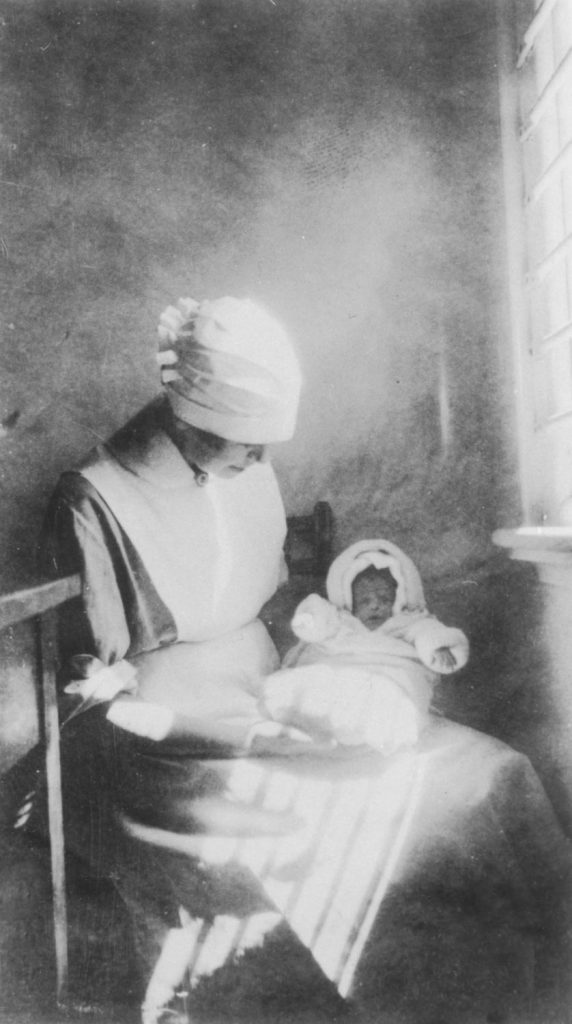
Babies Admitted to the Hospital for the First Time
Later, in 1921, a specialised babies’ ward was established.
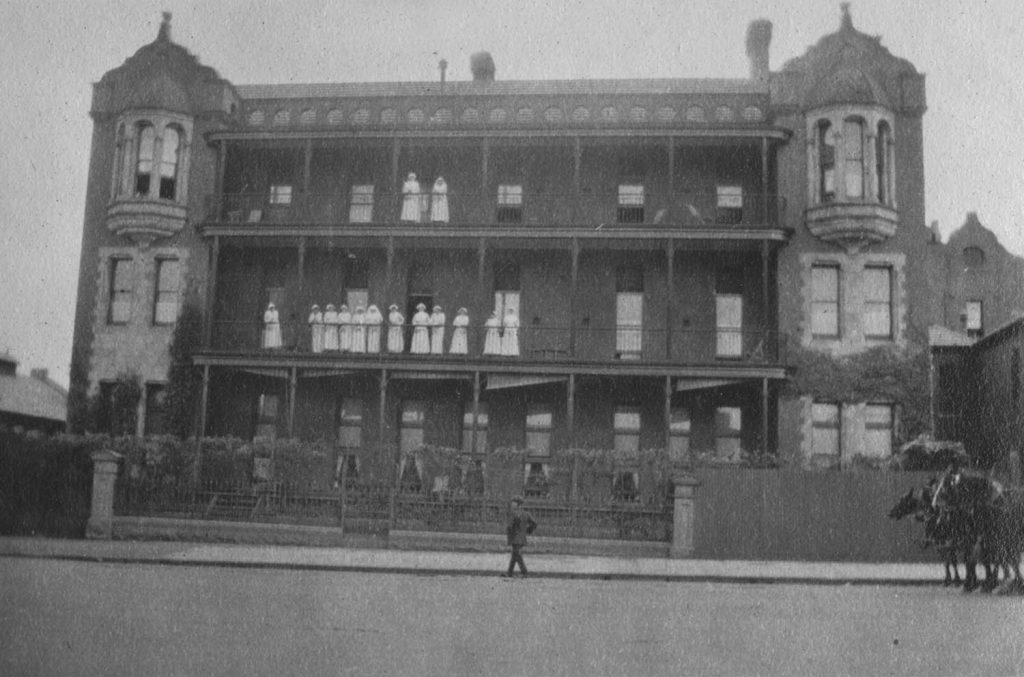
John Robertson Nurses’ Home
Opened on Rathdowne Street, the new nurses' home replaced damp and overcrowded pre-existing quarters.

Hampton Convalescent Home
'Edgecliff' on Beach Road in Hampton was purchased after the Brighton Convalescent Cottage was burnt down. Convalescent care was provided in Hampton until 1957.

First Splint Technician Hired
The splint workshop became a crucial service for the hospital, as well as an avenue of training and employment for prior patients.
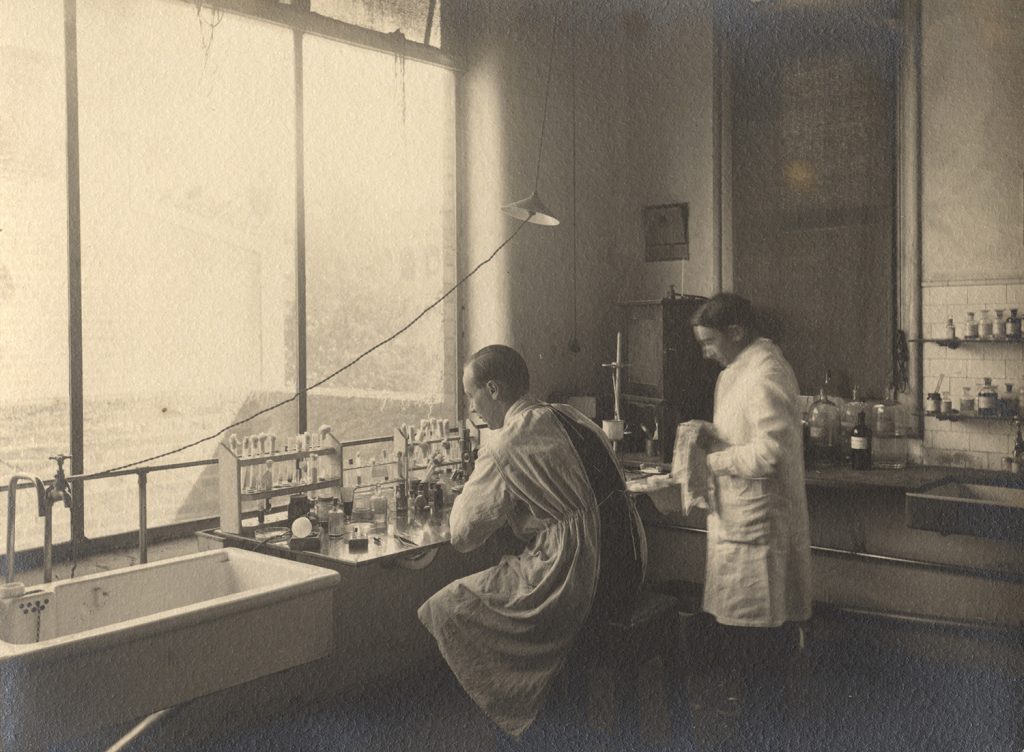
Pathological Laboratory Block Opened
The laboratory was a key element of the hospital’s diagnostic and research toolkit.

The Edward Wilson Pavilion
Built in place of the old Redmond Barry house on Rathdowne Street, the Edward Wilson Pavilion housed 40 surgical and 20 medical beds, as well as two operating theatres.
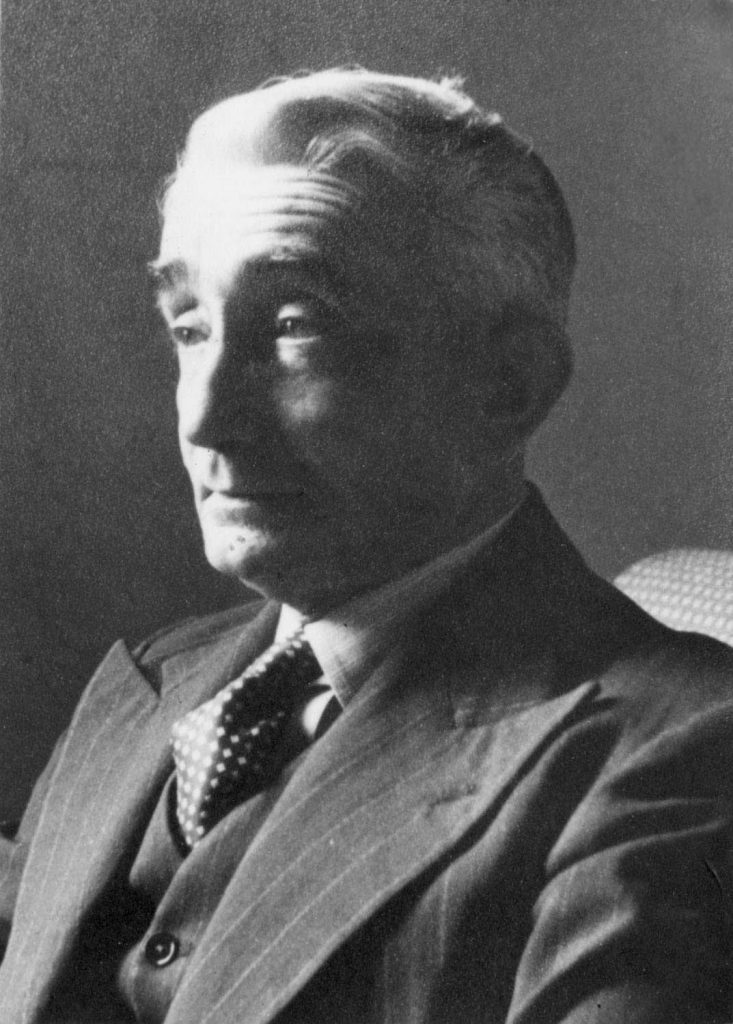
First Full-time Pathologist Appointed
Dr Reginald Webster was the first full-time pathologist at any Melbourne hospital. He stayed in the role until 1947.
Beginning of the First World War
July 28th, 1914
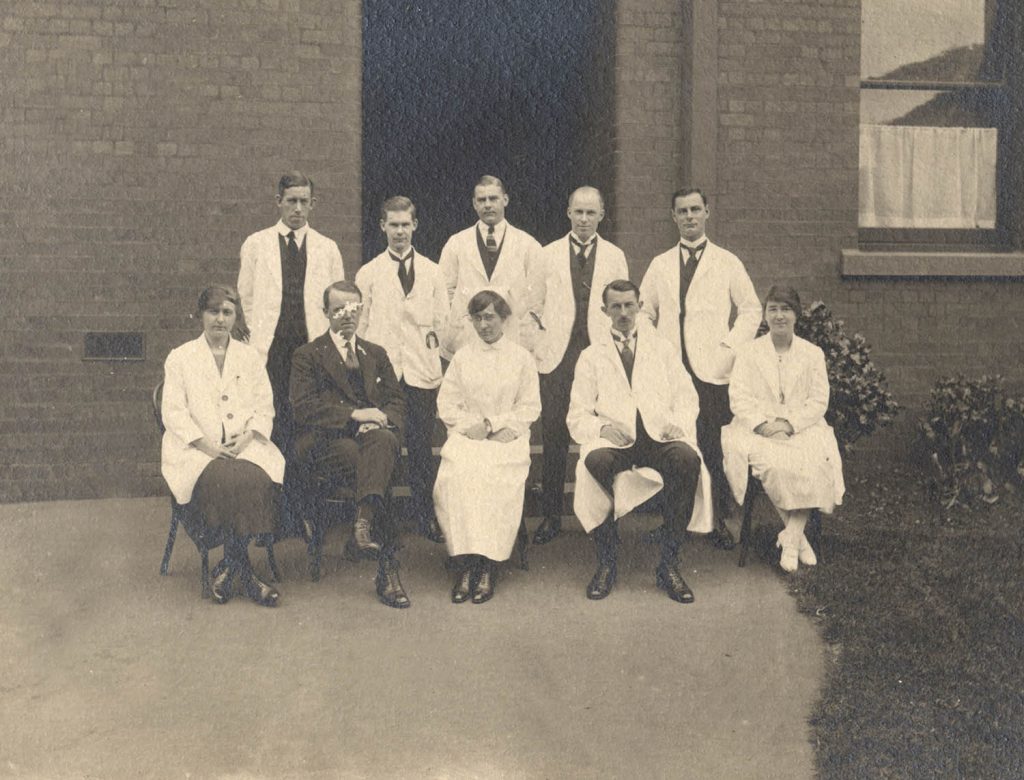
Male Doctors Join the Army
As a result, a more diverse representation of doctors were able to find employment at the Children’s. Women such as Dr Vera Scantlebury, Dr Ellice Davies, Dr Annie Bennett, Dr Bertha Donaldson, and Dr Annie Windmill joined the hospital as residents.
Cerebro-spinal Meningitis Epidemic
Influenza Pandemic
1918-1920
By 1919 the 'Spanish Flu' hit peak case numbers in Australia and tens of thousands of lives were lost.
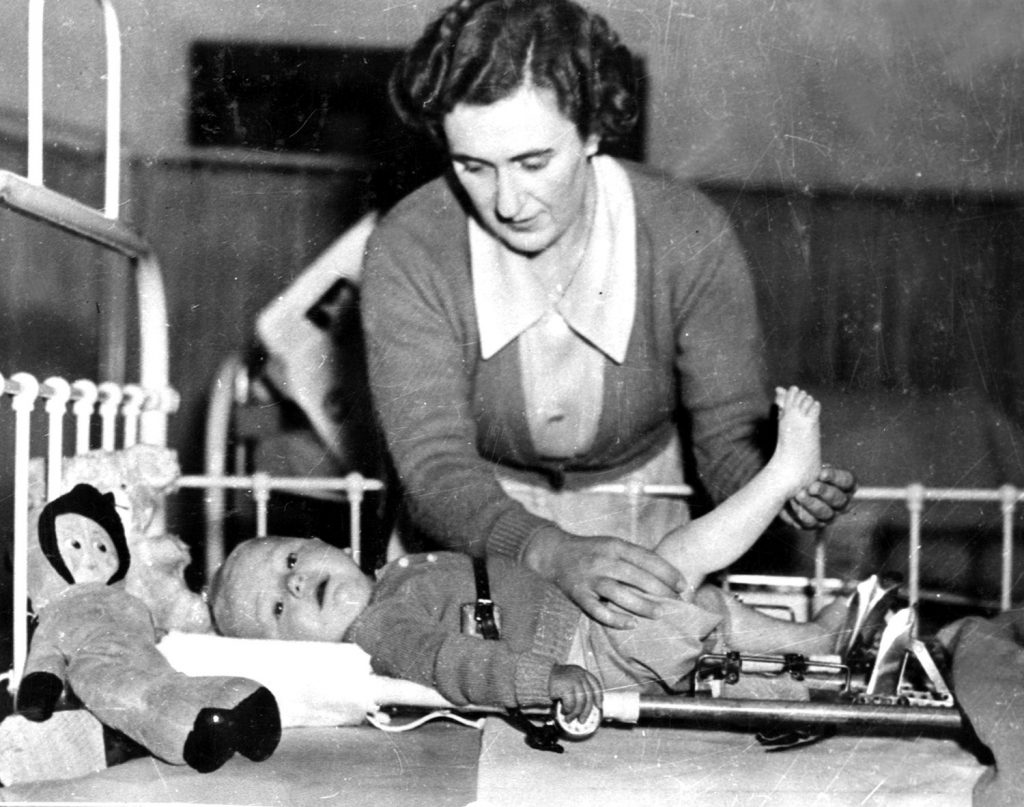
Increase in Physiotherapy Treatments
A polio epidemic in Victoria saw a need for the hospital to hire more physiotherapists, further solidifying the role of physiotherapy as a key aspect for after-care of patients.

Change in Working Conditions
After protests, the regular working week for nurses was reduced to 56 hours a week.
Image credit: PROV, VA 1239 The Royal Children's Hospital, VPRS 16800/P1 Rose Vaughan's Note Book, Unit 1 Rose Vaughan's Note Book November 1886 and October 1905. Digitised copy.
End of the First World War
November 11th, 1918
Returned Servicemen Are Given Preference for Employment
Nearly every new resident employed was a former soldier and women who had held doctor and surgeon positions during the war were put at a disadvantage.
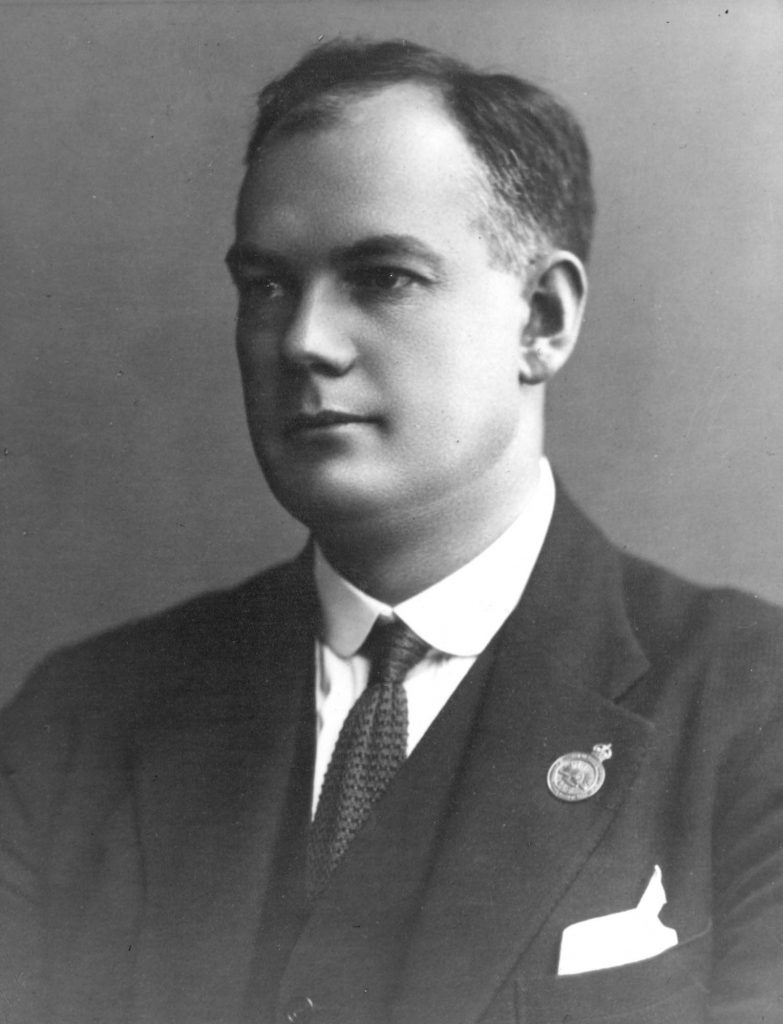
Dr John ‘Jock’ Whyte Grieve
Grieve became chief resident doctor in 1919 and worked at the hospital until his death in 1948. He was much loved for his gentle demeanour in dealing with patients.

Matron Grace Wilson
Appointed as matron, Wilson was a great advocate for the improvement of working conditions for nurses.
League of Former Trainees and Associates (LOFT) Established
LOFT supports an annual scholarship for nursing research and provides a platform for members to maintain relationships and connections with the hospital.
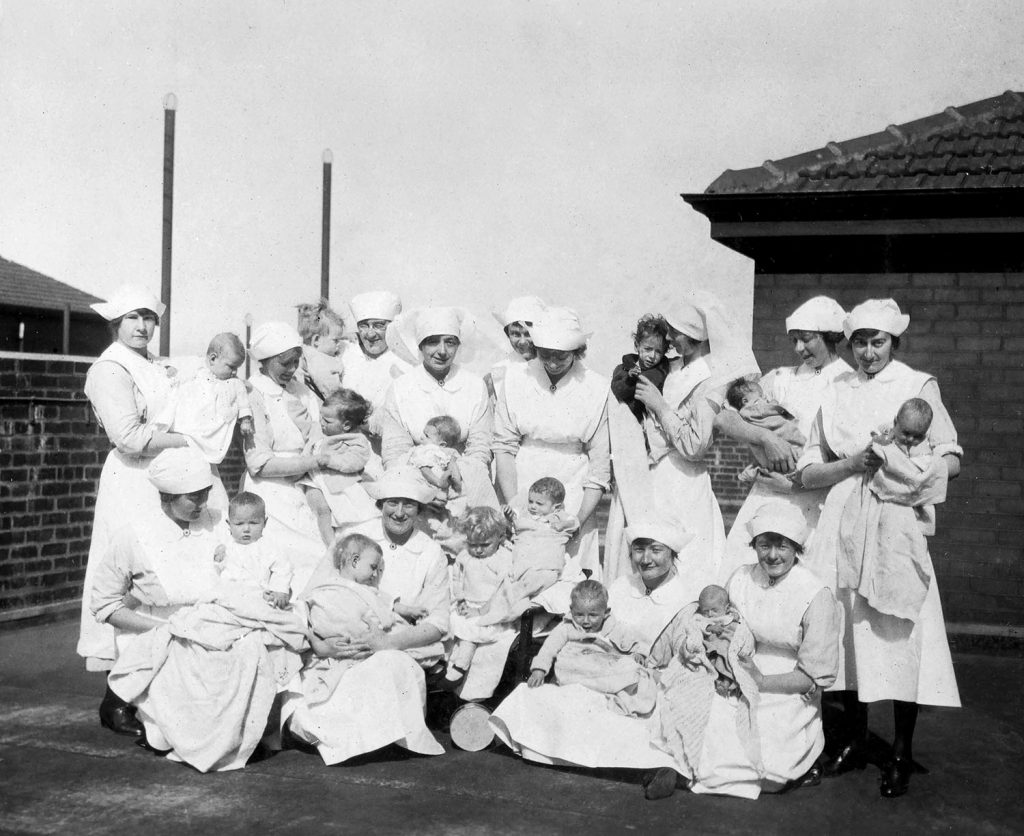
First Babies’ Ward in Melbourne Opened
A public appeal was held in 1919 to raise funds to build a specialised ward for babies.
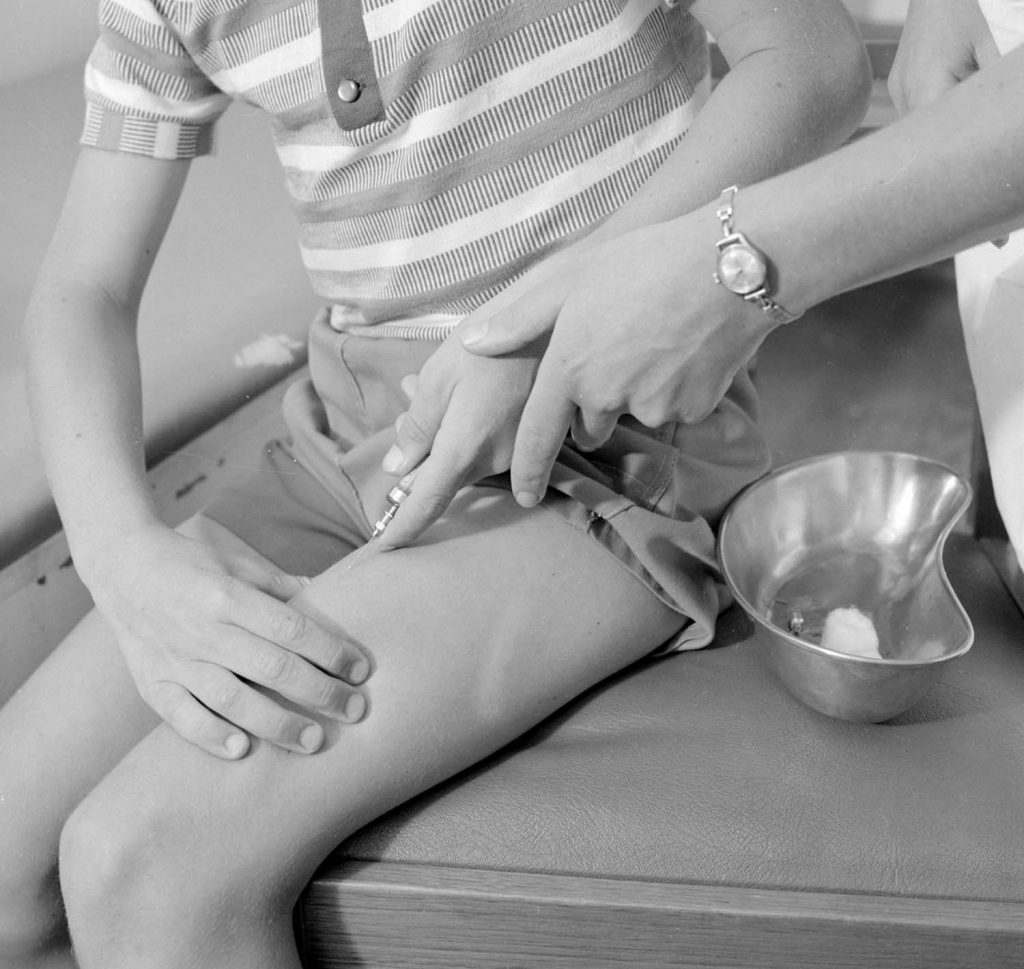
Discovery of Insulin
Discovered in Canada, insulin has saved lives worldwide.

Nurse Ivy Silverthorne Flower
Flower began nurse training in 1921, became a staff nurse in 1924 and was appointed deputy matron in 1934. She remained involved with the hospital until 1962.
First Auxiliaries Meetings Held
Committee members from Kew, Essendon, Toorak, Black Rock, St Kilda and Malvern orchestrated the first meetings.
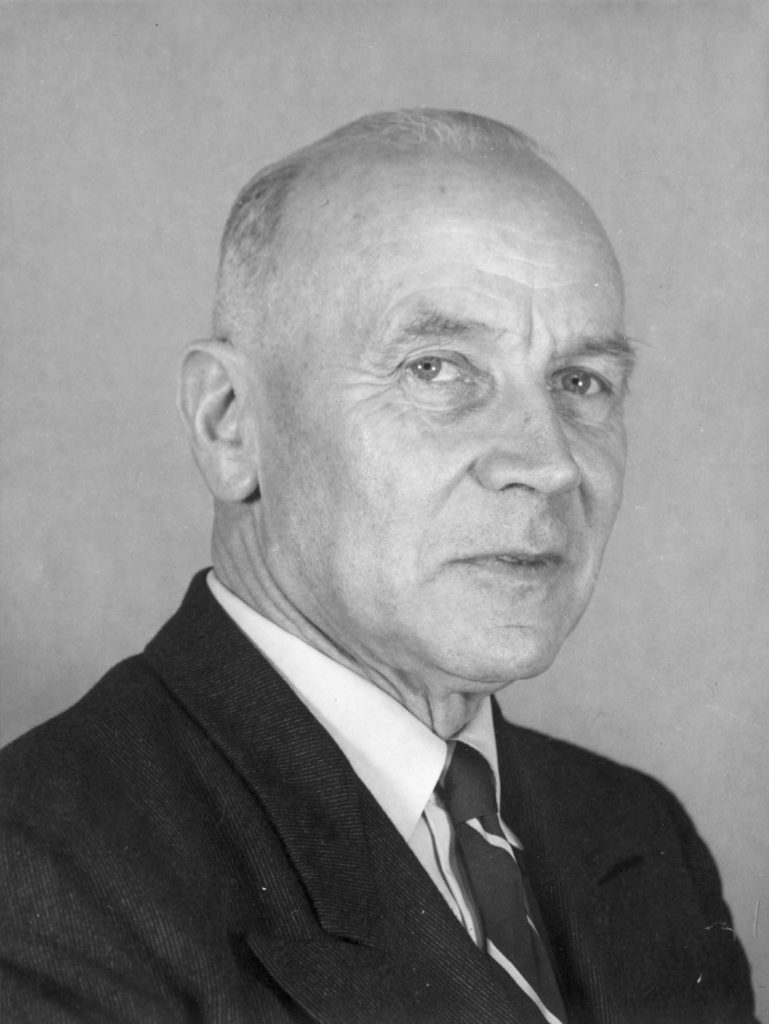
Dr Robert Southby OBE
Beginning as a junior resident, Southby became medical superintendent in 1924. He became lecturer in paediatrics in 1948 and remained involved in paediatrics until his death in 1991.

Matron Hilda Walsh
Appointed as matron, Walsh maintained efficiency and order on the wards. Due to retire in 1940, she stayed until 1947 because of the war.

Hilda Mackinnon
As committee president, Mackinnon was responsible for guiding the hospital through the Depression.

Dr Howard Boyd Graham
Appointed to the first medical superintendent role, Dr Graham was interested in the relation between poverty and child health.
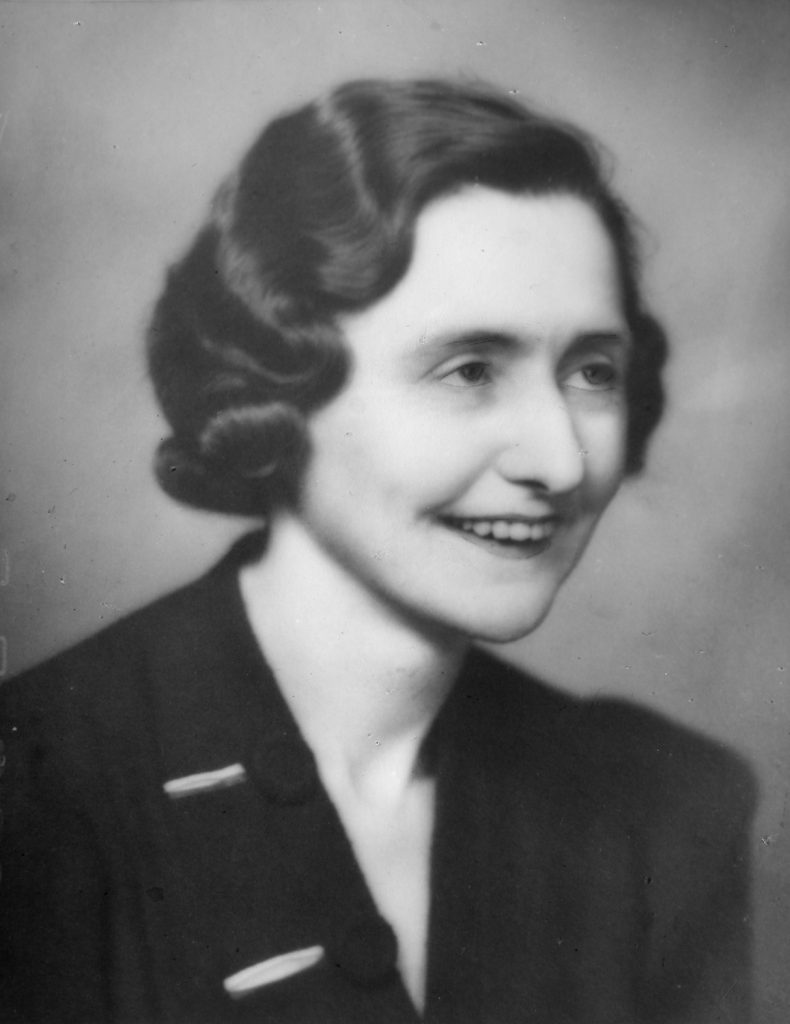
Dame Kate Campbell DBE
Though Campbell resigned in 1924 for a role with more responsibilities at The Royal Women’s Hospital, the time she spent with children at the hospital solidified her interest in paediatrics and she became an enormously respected practitioner in the field.
A ‘Changing of the Guard’
The resignation of many stalwart committee members saw a new and fresh outlook for the hospital.

Dame Jean Macnamara DBE
Macnamara was a great advocate for the benefits of physiotherapy. In 1928, she became the first woman to hold full honorary rank. She stayed with the hospital until 1959.
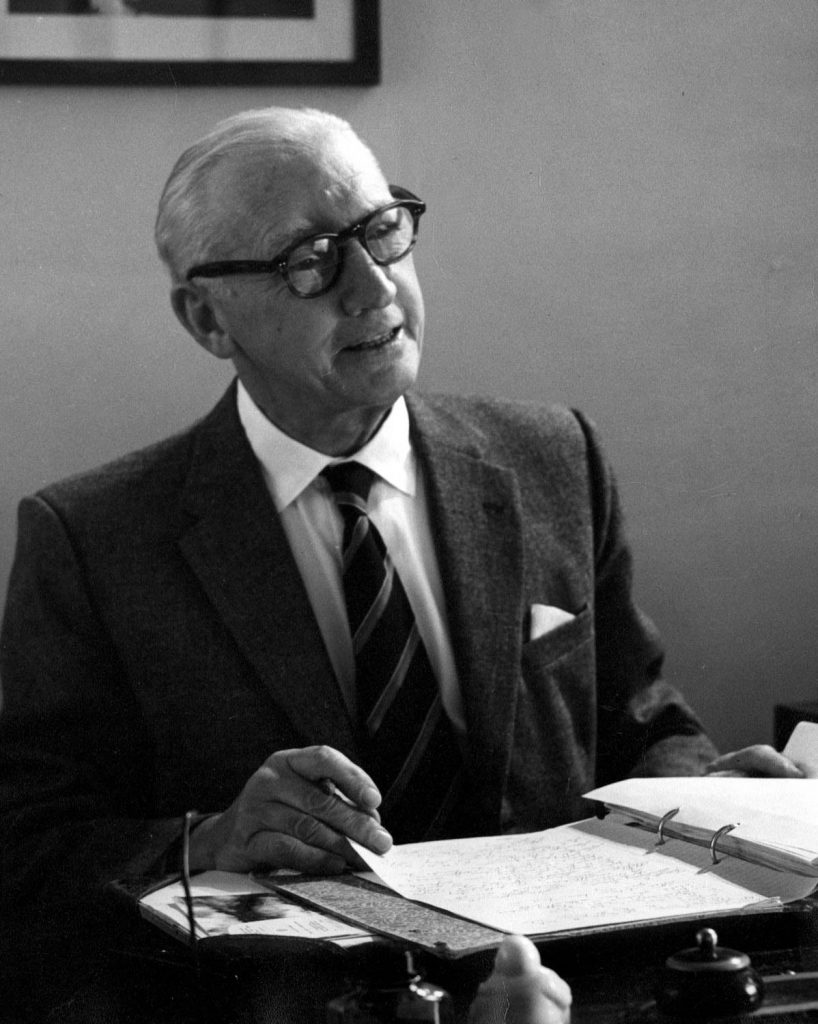
Dr Douglas Galbraith
Dr Galbraith was appointed physician to outpatients and involved with the hospital until 1960. He believed in the importance of holistic care for children, addressing their social, as well as their physical, rehabilitation.
Polio Serum Trials
First use of human immune serum delivered in the pre-paralytic stage of polio. Research into the serum saw its use discontinued.
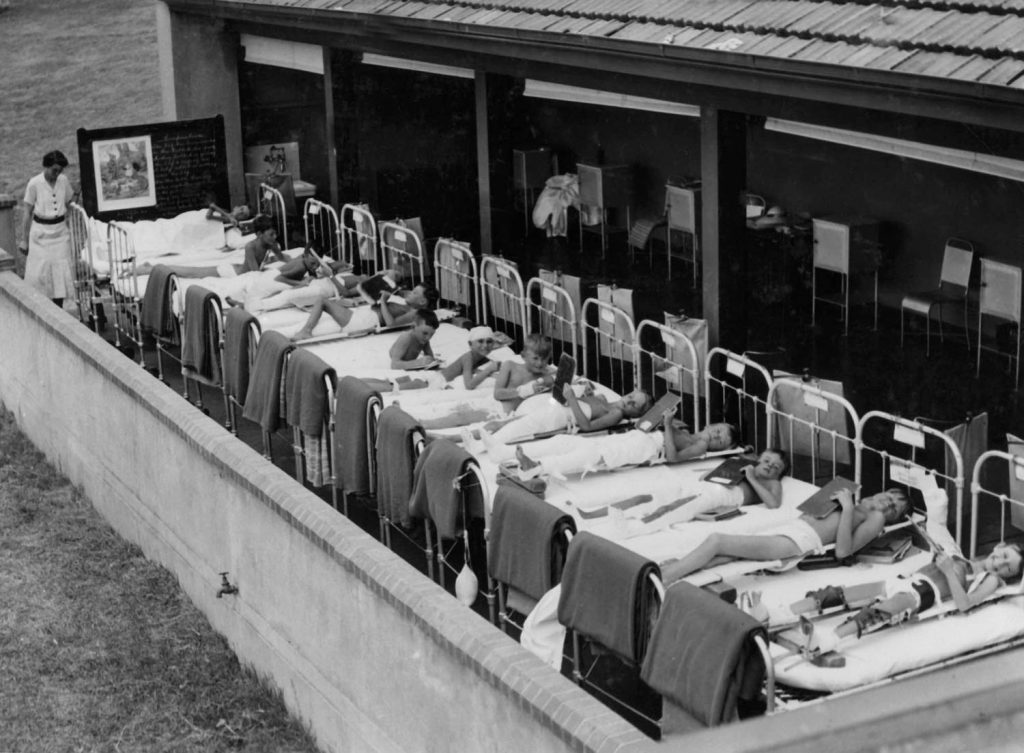
Heliotherapy Introduced to Australia
Doctors who had worked in Europe during the war brought the concept of heliotherapy to Australia. Mr Wilfred Kent Hughes was a particularly strong advocate for the treatment style and a heliotherapy ward was opened at the Hampton Convalescent Home.
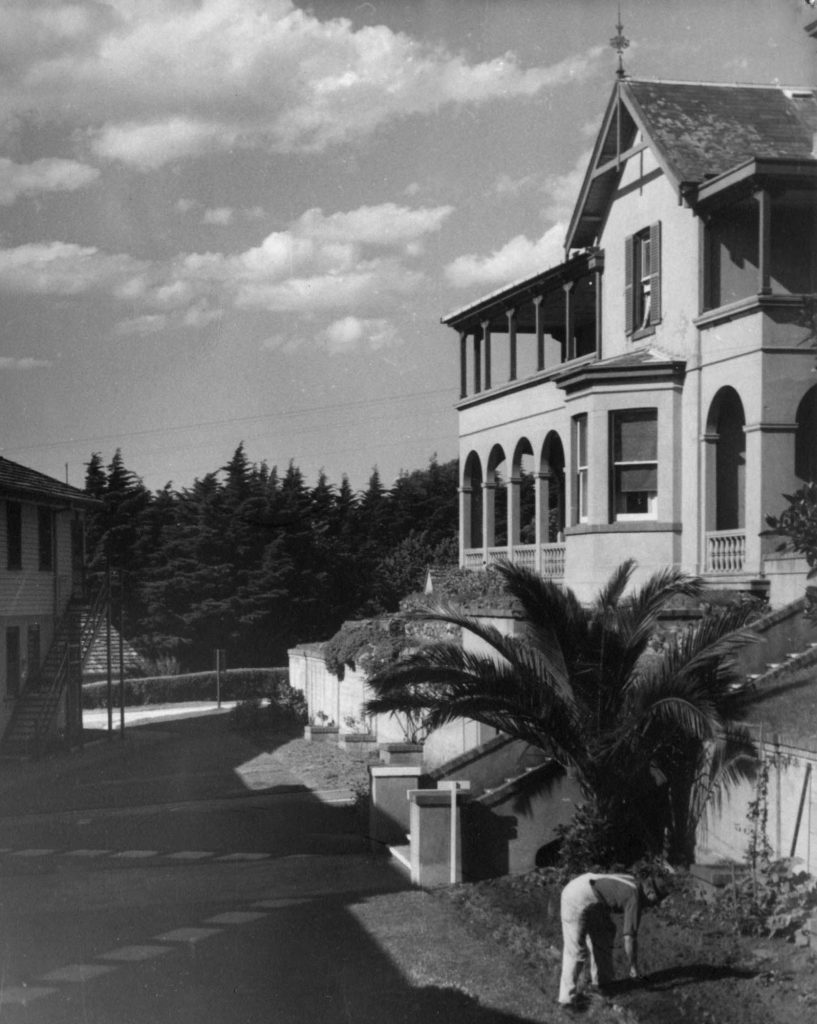
Beachleigh House Purchased
Originally built as a family home, the house became nurses’ accommodation, and the hospital built The Children's Orthopaedic Hospital on the adjoining land.
The Great Depression
August 1929 - March 1933
Widespread hardship led to a rise in demand for the hospital’s services and lessening of public contributions. The committee deferred requests for new equipment due to lack of financial resources.
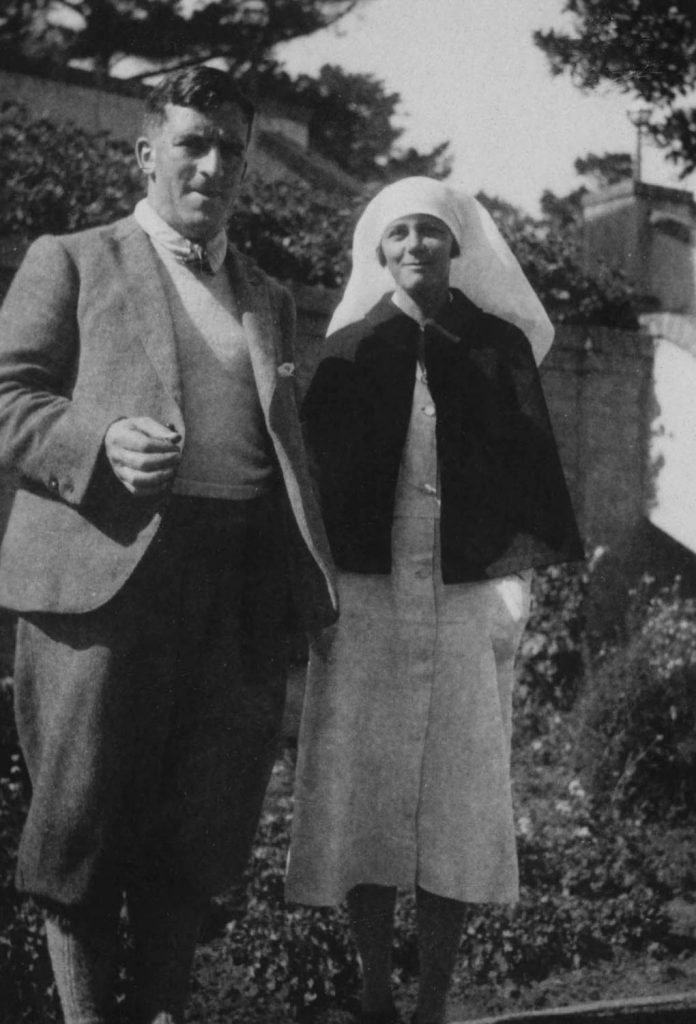
Dr John Colquhoun
Appointed as the first medical superintendent at The Children's Orthopaedic Hospital, which was soon to be opened.
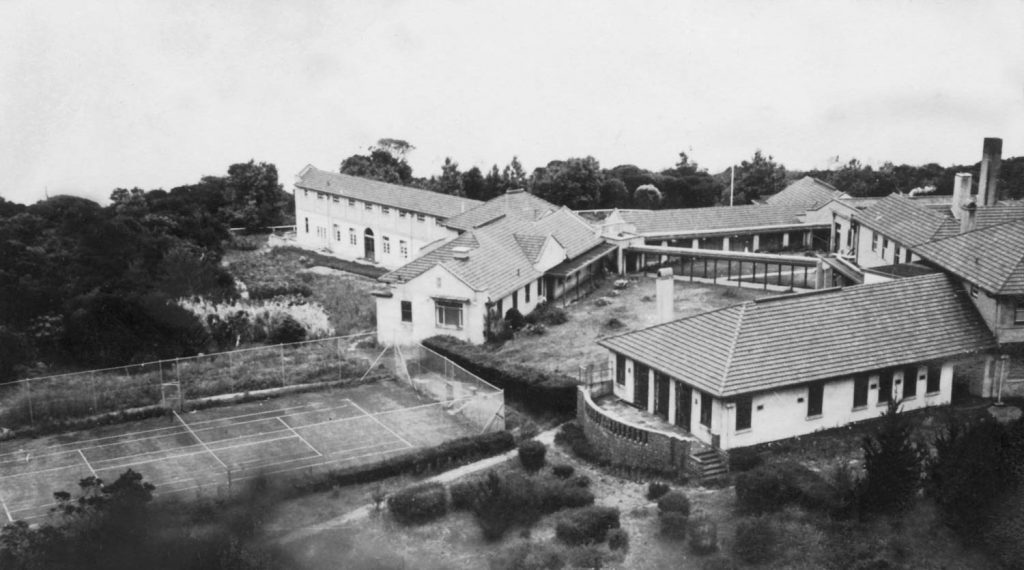
The Children’s Orthopaedic Hospital, Mt Eliza
The Children's Orthopaedic Hospital opened with capacity for 100 beds. Patients with tuberculosis, osteomyelitis, infantile paralysis and polio were provided with a facility specially-designed to meet their needs.

Dr Russell Howard
Howard started as a resident and explored a number of different avenues before focusing on paediatric surgery. He was made chief general paediatric surgeon in 1952 and held this position until his retirement in 1970.
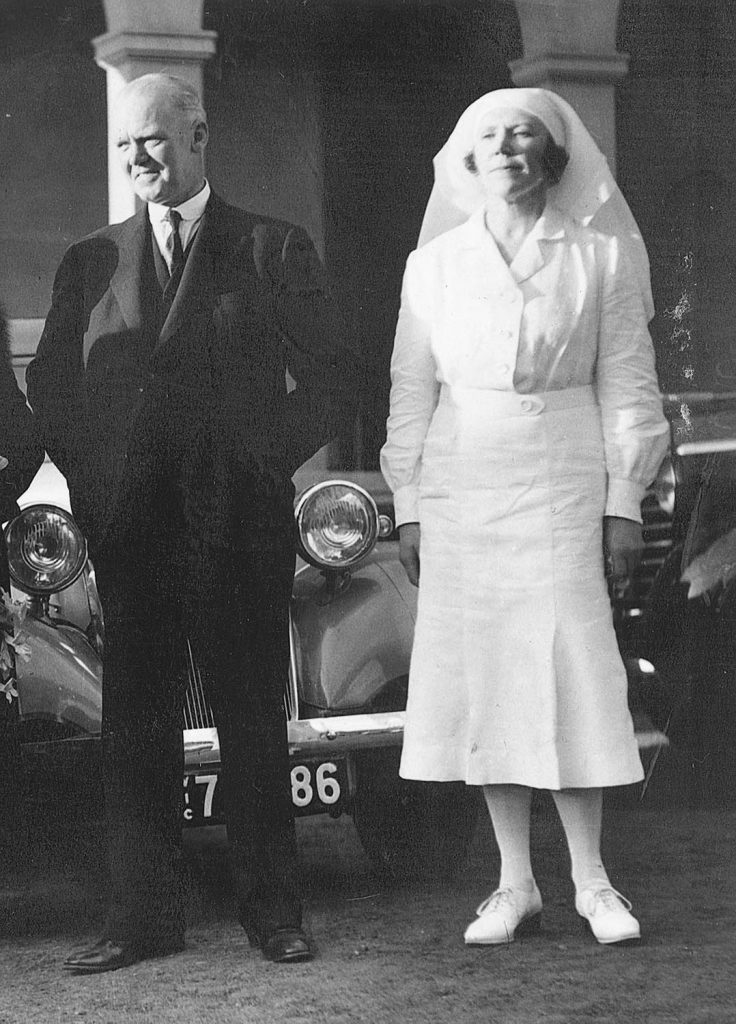
Matron Ina Laidlaw
First matron of The Children's Orthopaedic Hospital. Laidlaw remained in the role until 1950.
Dr Stanley Williams
Williams came to the Children’s as resident, then after more training in England was appointed medical superintendent in 1935. He was an innovative and well-published practitioner.
Launch of the Sporting Globe Carnival
The charity sports carnival continued annually until disrupted by the outbreak of the Second World War. Initially funds raised were shared with the Alfred Hospital, however from 1933 the event became dedicated to the Children’s Hospital and was a precursor for the Good Friday Appeal.

First Social Worker Employed
Isabel Hodge was the first social worker at the hospital, she quickly demonstrated the value of her role.
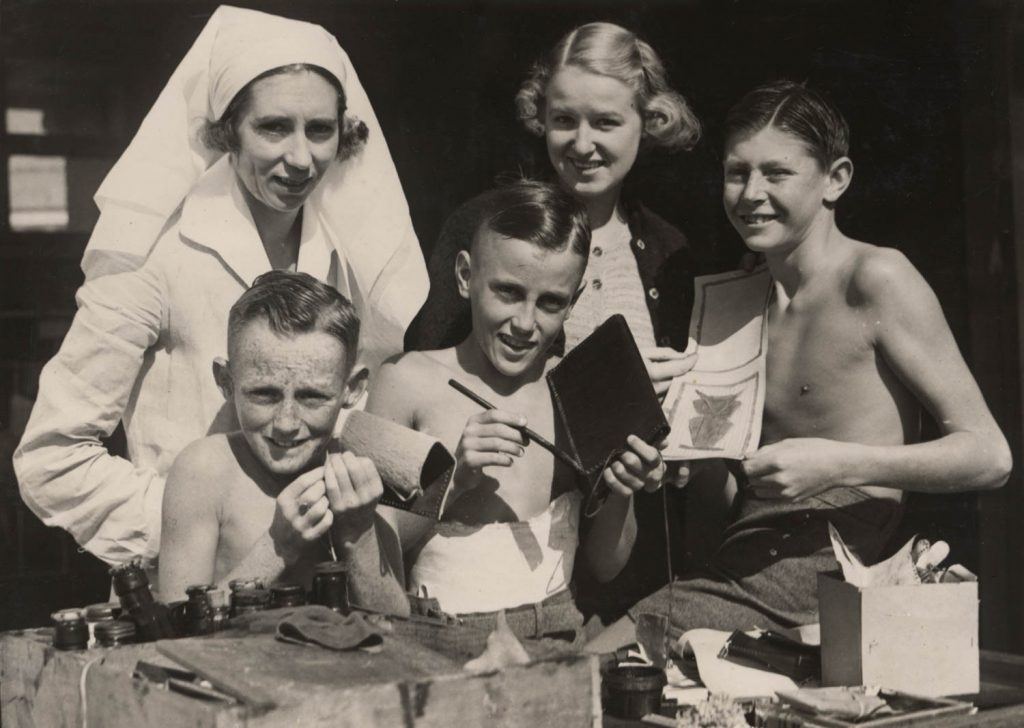
Occupational Therapy
The Children's Orthopaedic Hospital used occupational therapy to help children develop practical skills and strengthen their muscles.

Lady Ella Latham
Involved with the Auxiliaries since 1923 and a committee member since 1926, Lady Ella Latham was elected as president of the Committee of Management in 1933 and held the position until 1954. She guided the hospital through the Depression and the Second World War, and into its modern form.

Craft Hostel Designed for the Children’s Orthopaedic Hospital
A £4,500 donation by Lord Nuffield saw plans for a facility to teach vocational skills to disabled teenagers.

Professor Vernon Collins CBE
Appointed as a physician to inpatients, Collins quickly became medical superintendent. As medical director from 1948 to 1959, he worked closely with Lady Ella Latham to reform the hospital in terms of staffing and patient care. He was with the hospital until 1974.
Ruth Drake
Drake initiated services that became known as Speech Therapy, Audiology, and Psychotherapy. She introduced the hospital to the concept of ‘play therapy’. She was with the hospital until 1964.
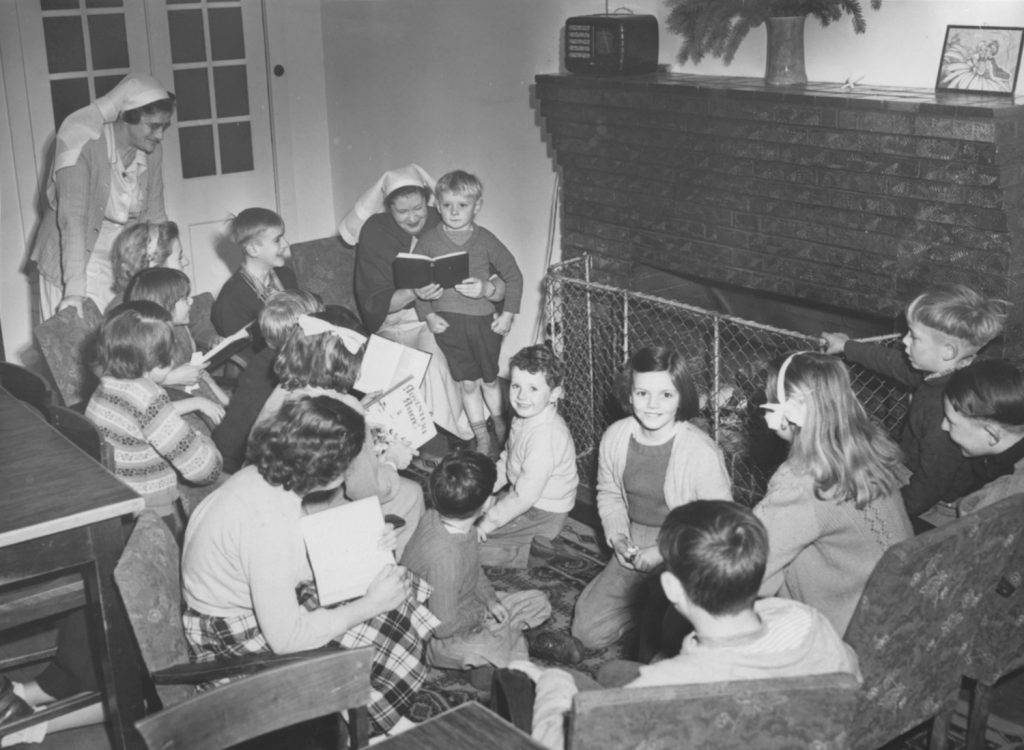
Sherbrooke Convalescent Home
Established with funds generously donated by philanthropist C M Wilson, the Sherbrooke Convalescent Home operated until 1957 and worked as a significant load relief for The Children's Orthopaedic Hospital.
Dr Eric Price
Appointed honorary surgeon at The Children’s Orthopaedic Hospital, Price became chief of orthopaedic surgery from 1946-1962 and developed many procedures for the care of orthopaedic patients.
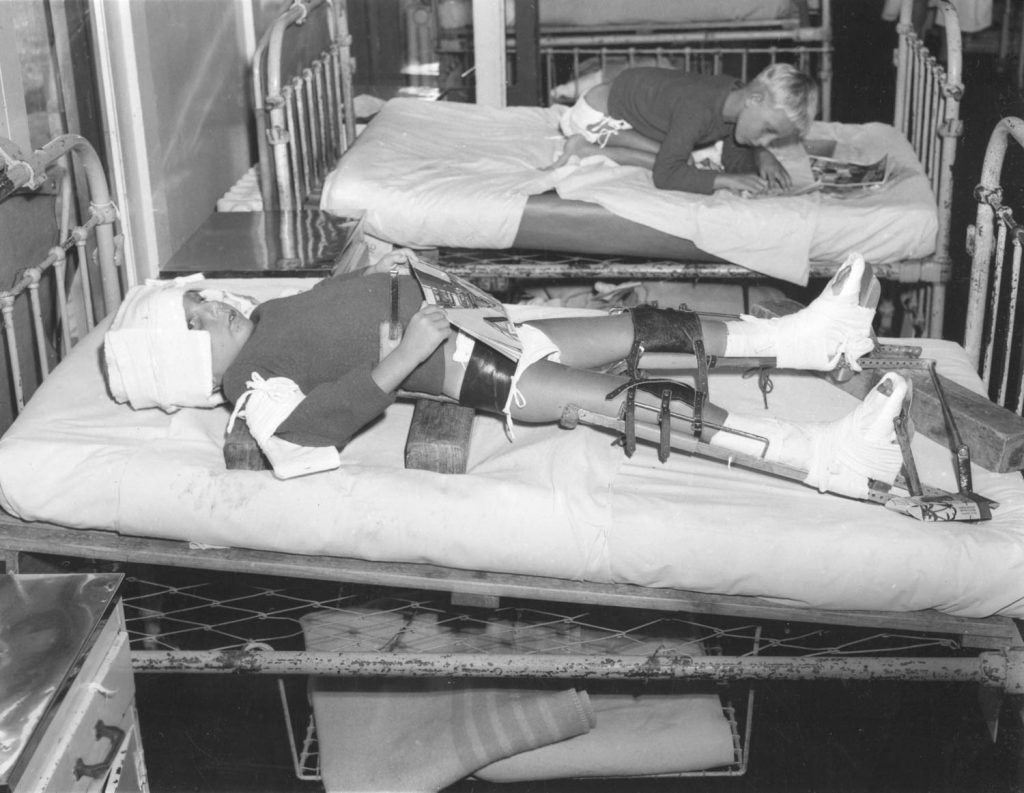
Polio Epidemic
1937 - 1938
There was a rise of poliomyelitis cases in the years between wars. Case numbers had a significant impact on the hospital’s services.
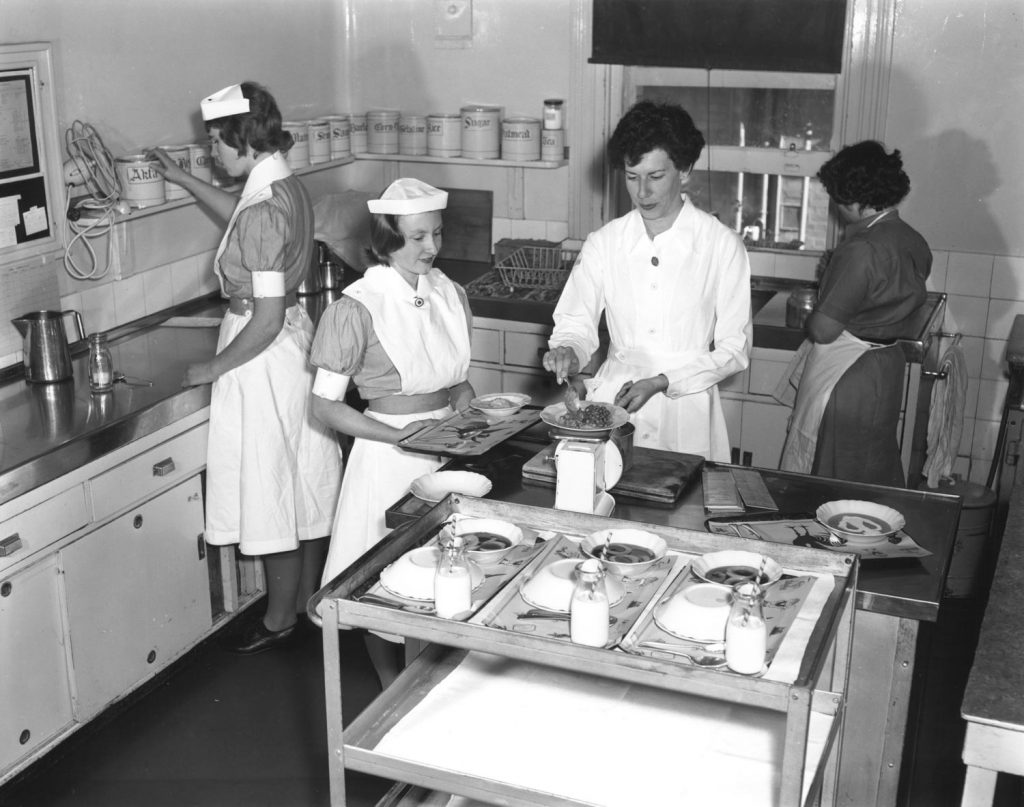
Dietetics Clinic Established
While the department was established in 1938, it wasn’t until 1940 that control of the kitchens and menus was relinquished to the dietetics team.
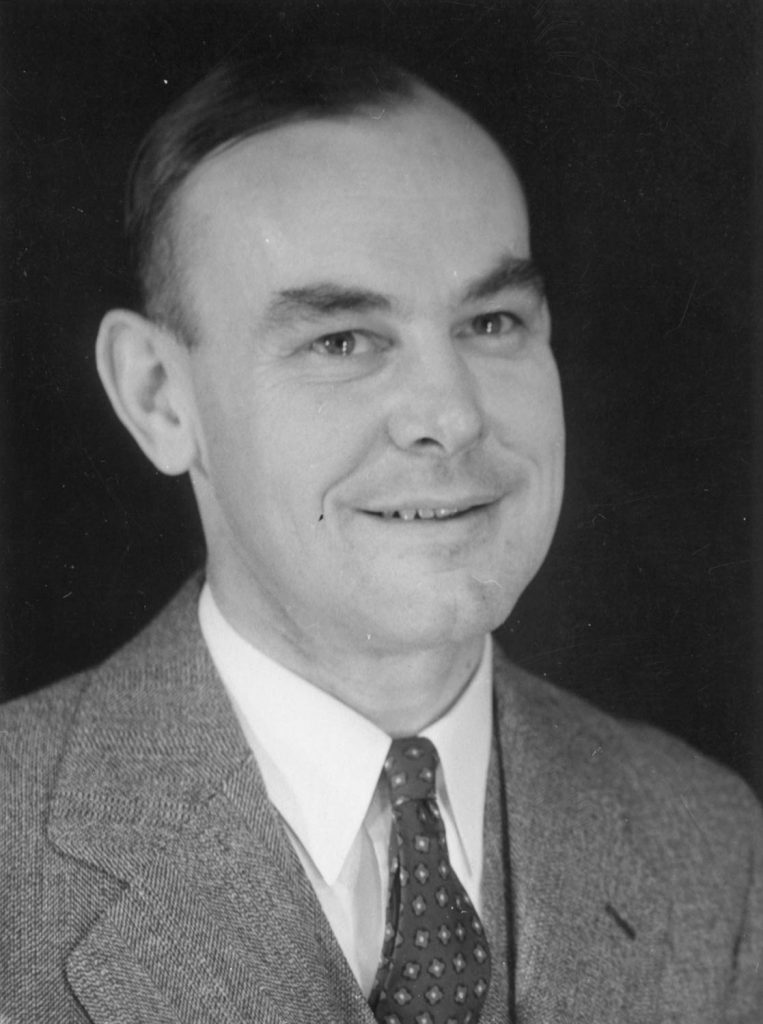
Dr Howard Williams
Appointed medical superintendent, Williams was involved with the hospital until 1975. His clinical paediatric experience and enthusiasm for clinical research had a strong influence on the diversity of services offered by the hospital. In 1948 he was appointed as the hospital’s first full-time director of clinical research.

Speech Therapy Clinic Established
Beginning of the Second World War
September 1st, 1939
The Children’s Orthopaedic Hospital Parent’s Association Auxiliary
Founded by the parents of long-term patients, this Auxiliary provided support in the way of fundraising and food donations.

Railway Employees Auxiliary
Jake Attrill, father of a patient, organised for around 5,000 of his railway colleagues to donate regularly straight from their pay cheque.
Change to Admissions Criteria
The hospital began to admit all children irrespective of their family’s financial situation.
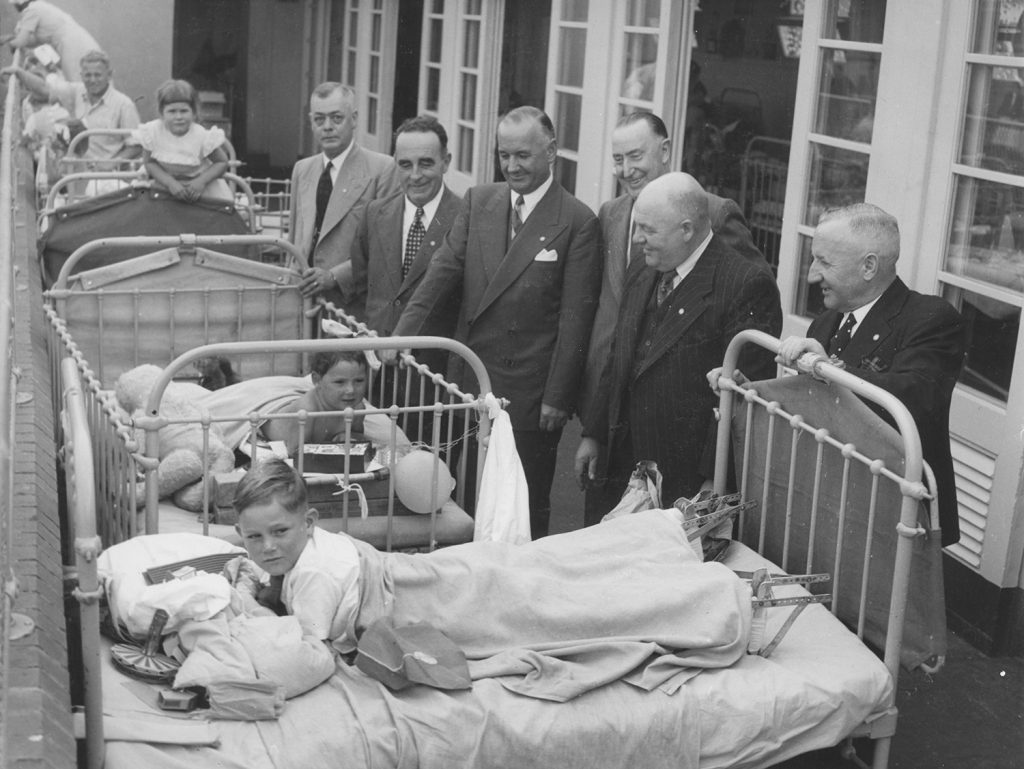
Foundation of the Uncle Bobs Club
Alf Clarke, Clarrie Williams, Jock McAdam, and Ray Fisher were the founding members, inspired by a patient they knew at The Children's Orthopaedic Hospital.
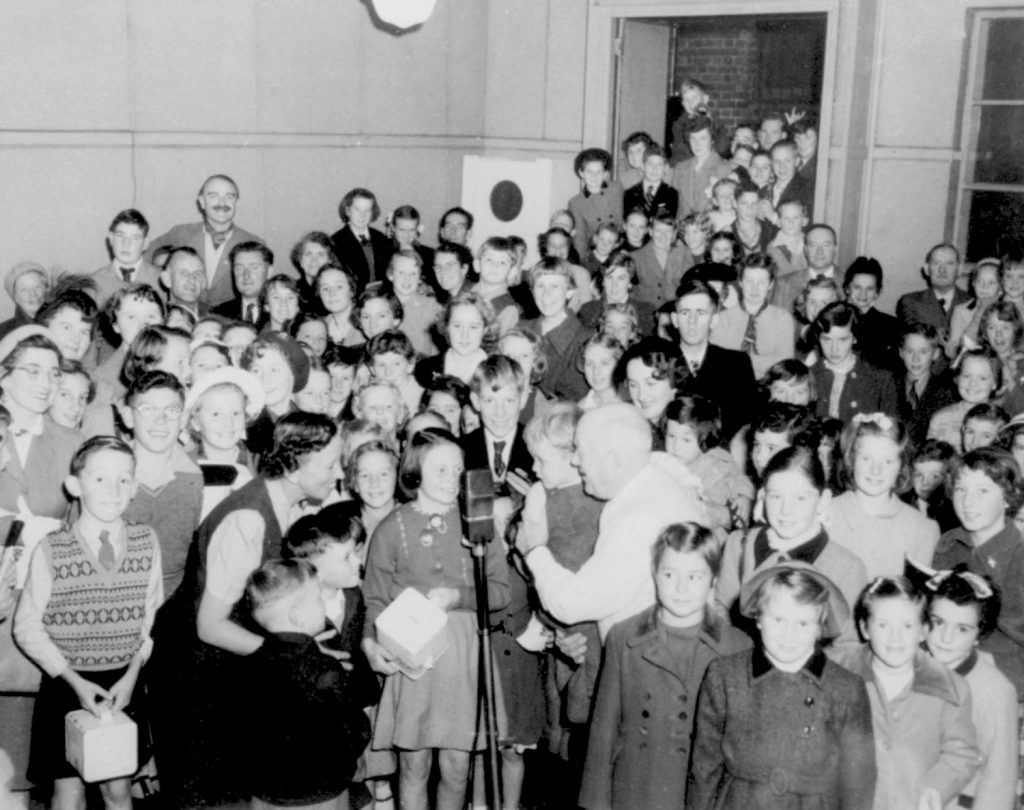
First Good Friday Radio Appeal
April 3rd, 1942
Jim Blake suggested the idea of holding an all-day radio appeal. Under the direction of Sir Keith Murdoch, 3DB supplied a platform and The Herald and Weekly Times covered all expenses. They raised £8,310.

Dr Elizabeth Turner
The first woman to become medical superintendent at the hospital, Turner also administered the hospital’s first penicillin treatment in 1944 and was instrumental in the development of a travelling incubator to help bring babies to the hospital.
Beginning of the Antibiotic Era
First discovered by Sir Alexander Fleming in 1928, antibiotics entered general use at the hospital in the 1940s.
End of the Second World War
September 2nd, 1945
Influx of Immigrant Families After the War
Late 1940s – early 1950s
Many children arriving from Europe with their families were suffering poor health from the journey and long-term malnutrition during the war. The hospital responded as best as it could, often relying on maids as interpreters.

Dr Charlotte Anderson AM
Starting in 1946, Anderson worked at the hospital until 1968. She was a pioneer in clinical research, particularly in the field of gastroenterology, where she made significant contributions to treatments of cystic fybrosis and coeliac disease. She formed the hospital’s Gastroenterology Research Unit in 1961.
Introduction of Diabetic Holiday Camps
Dr Geraldine Amies, a diabetic herself, introduced diabetic camps to help improve the quality of life for diabetic children.
Specialist Appointments
In a show of the professional developments of the time, the hospital committee appointed three new specialists: Mr Reginald Hooper as neurosurgeon; Dr Graeme Robertson as neurologist; and Mr Benjamin Rank as plastic surgeon.
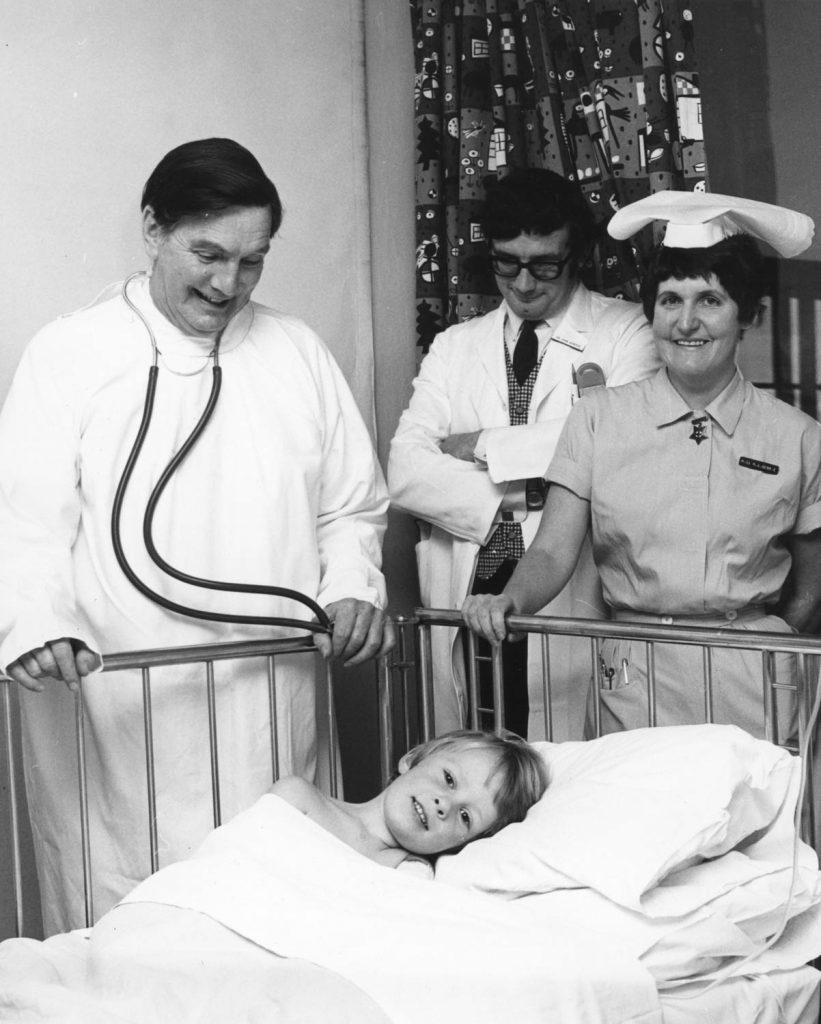
Antibiotic Streptomycin Tuberculosis Treatment
Dr Stanley Williams applied the hospital’s first treatment of tuberculosis with streptomycin.
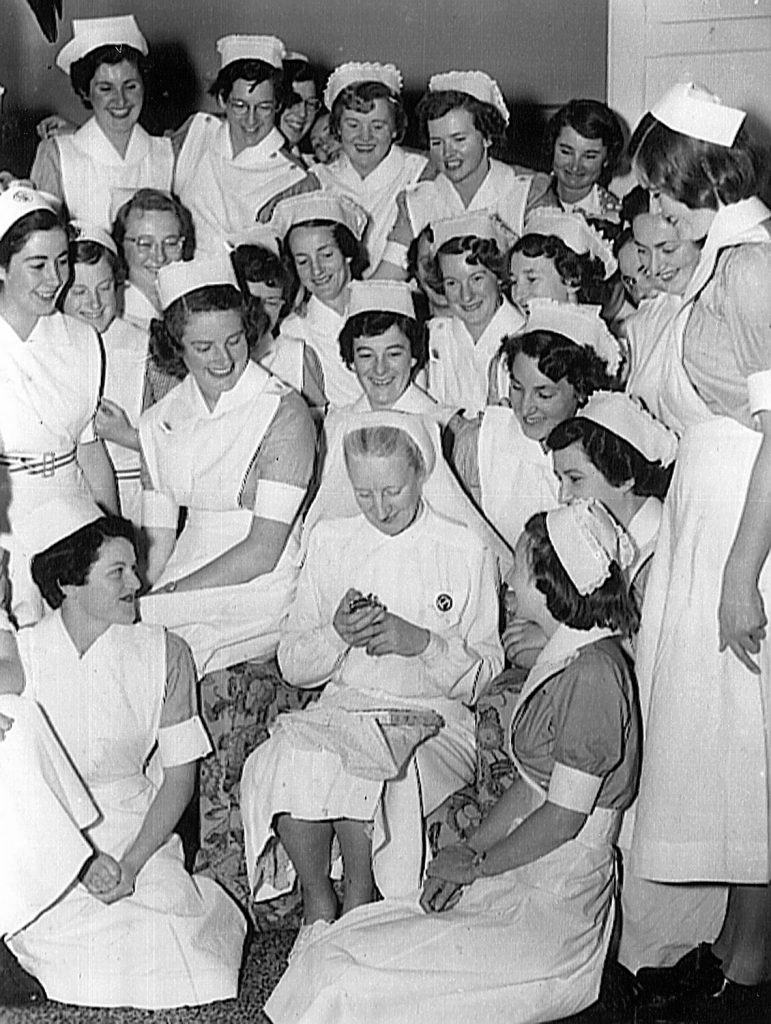
Matron Lucy de Neeve
De Neeve was with the hospital until 1962 and was a great advocate for the nursing profession, fondly remembered by her staff.
Medical Imaging Department Established
Cyril Murphy was the first chief photographer. Joe Szczepanski filled the role at The Children’s Orthopaedic Hospital from 1950.
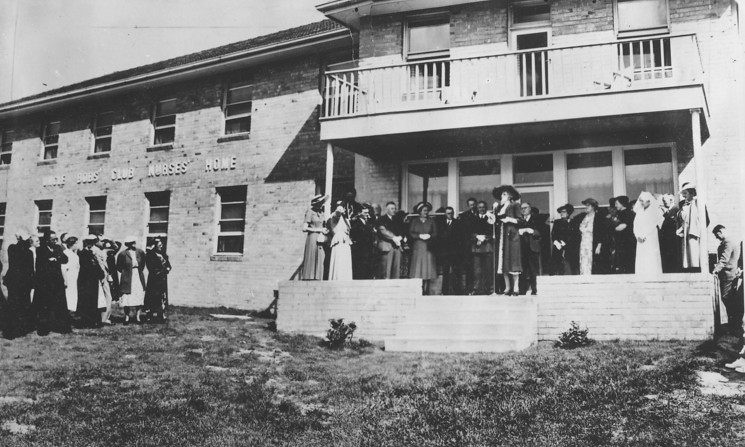
Uncle Bobs Nurses Home Opened
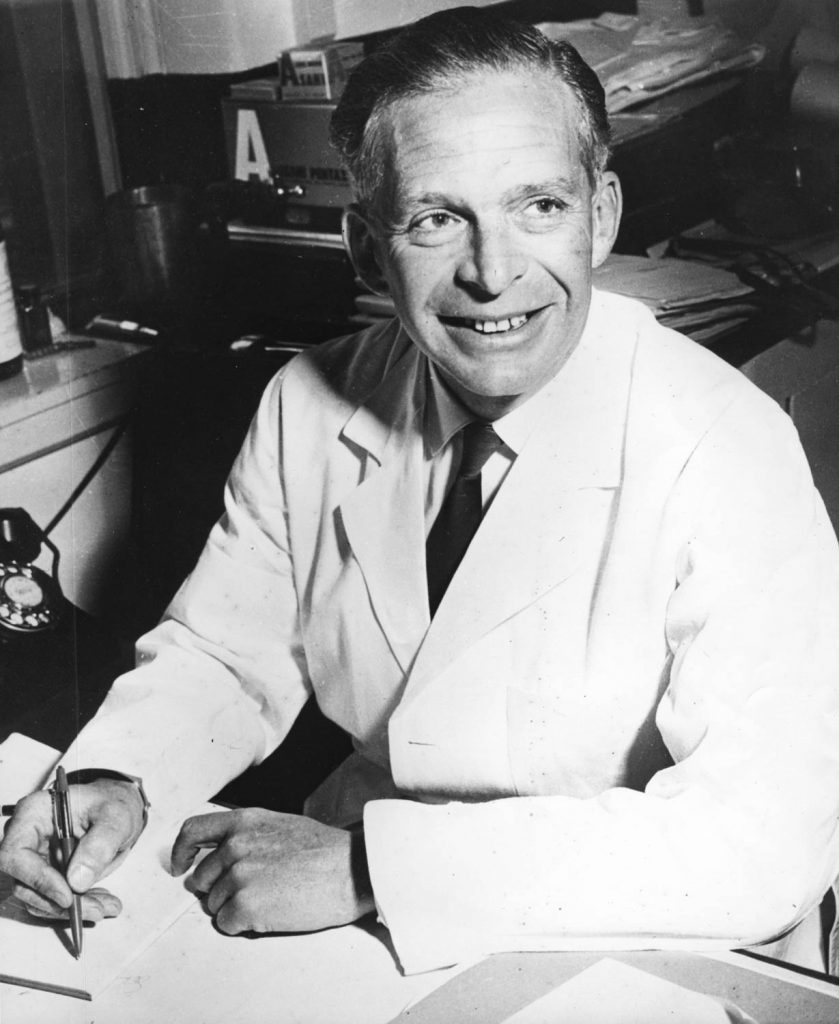
Dr John Perry
Appointed director of pathology, Perry managed an expansion of the department. He became medical director from 1960 and oversaw the move from Carlton to Parkville.
Establishment of the Clinical Research Unit
First Trials of Leukaemia Treatment
Led by Dr John Colebatch AO, the hospital implemented the world’s first controlled trial of chemotherapy treatments for leukaemia - previously considered untreatable.

New Parkville Site Allocated
10 acres of Royal Park was pegged out as the site for a new hospital premises.
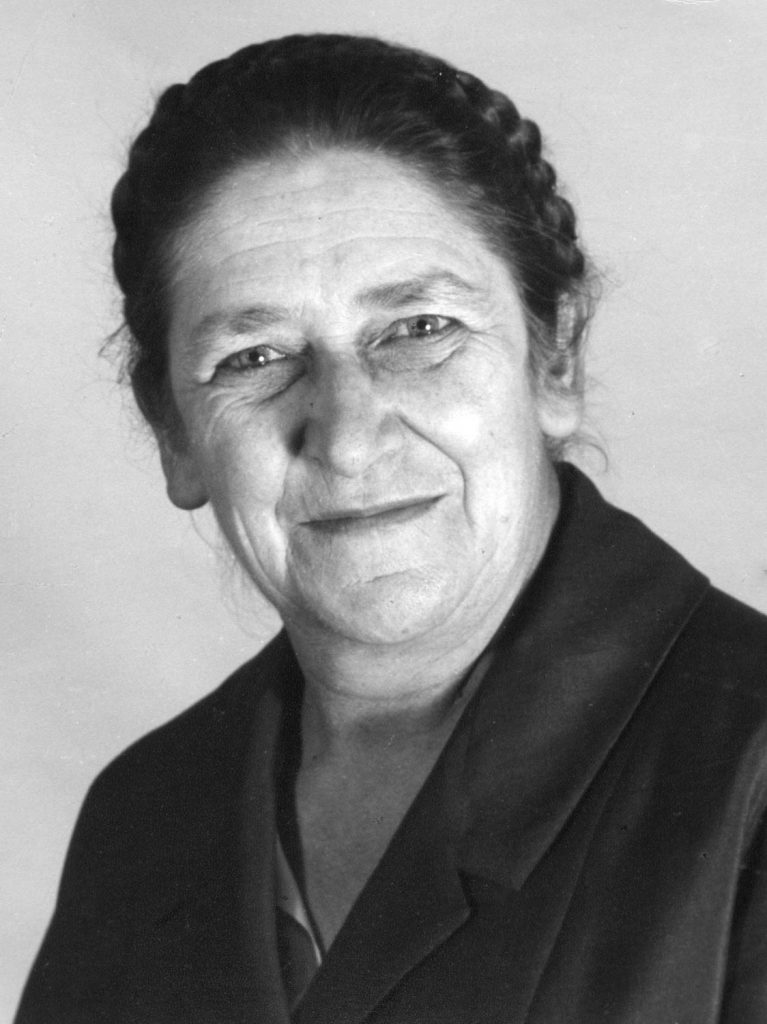
Dr Margaret (Gretta) McClelland OBE
Appointed senior paediatric anaesthetist, McClelland became the hospital’s first full-time director of anaesthesia in 1956 and was with the hospital until retirement in 1970. She was involved in improvement of anaesthetic techniques.
Library Re-named in Honour of Dr J W Grieve
After Grieve’s passing in 1948, Dr Howard Williams petitioned for the library to be named in his honour.
Frances Kruger
Kruger became the first interpreter on staff at the hospital. She had fluent command of five languages.
First Attempt to Separate Conjoined Twins
Neurosurgeon Mr Reginald Hooper conducted surgery on twin girls joined at the head. Sadly, the operation was unsuccessful.
First Male Trainee Nurse
Approved as a training school for male nurses in 1946, it wasn’t until 1952 that the nursing school received an application from a man.
Staff System Reform
Honorary staff positions were symbolically re-named senior medical staff. Staffing reform meant the hospital was able to attract talented new staff.

Child Psychology Department Established
Led by Ruth Wertheim and John Williams.
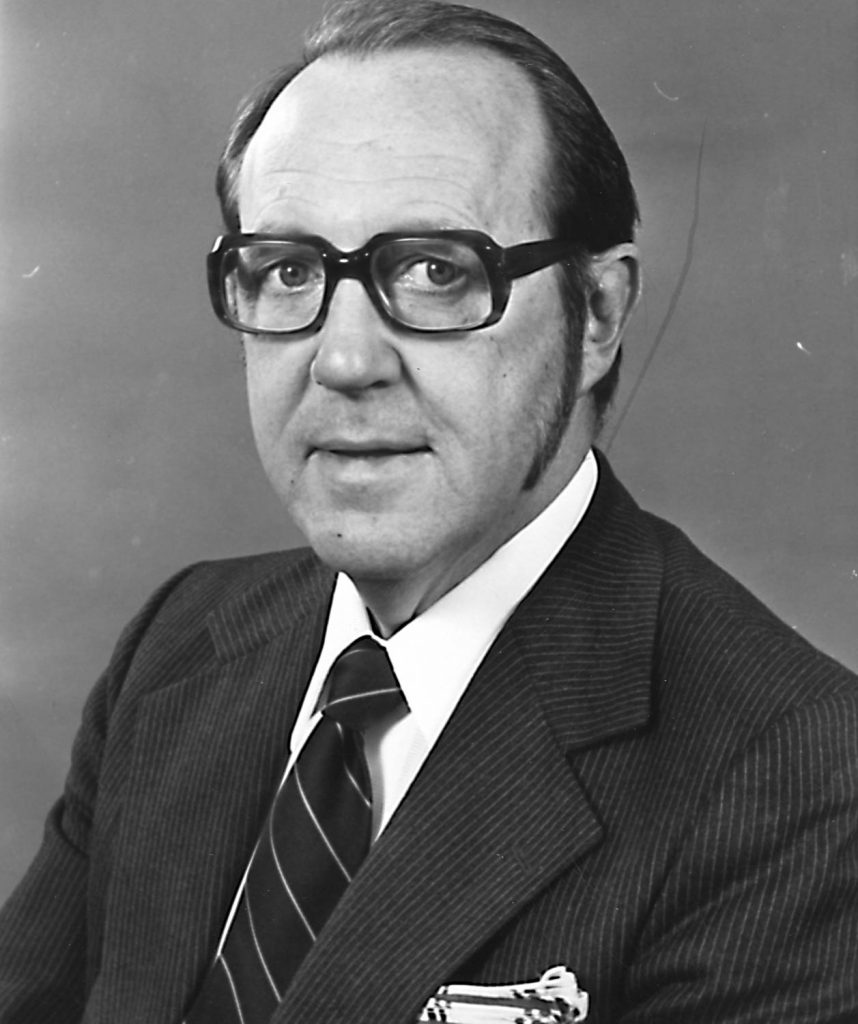
Mr Peter Jones
Jones began a long surgical career at the hospital. He was a prolific researcher, publisher and regarded as a wonderful teacher. In 1970 he became chairman of the senior medical staff. He also designed the coat of arms for the hospital.



















































































